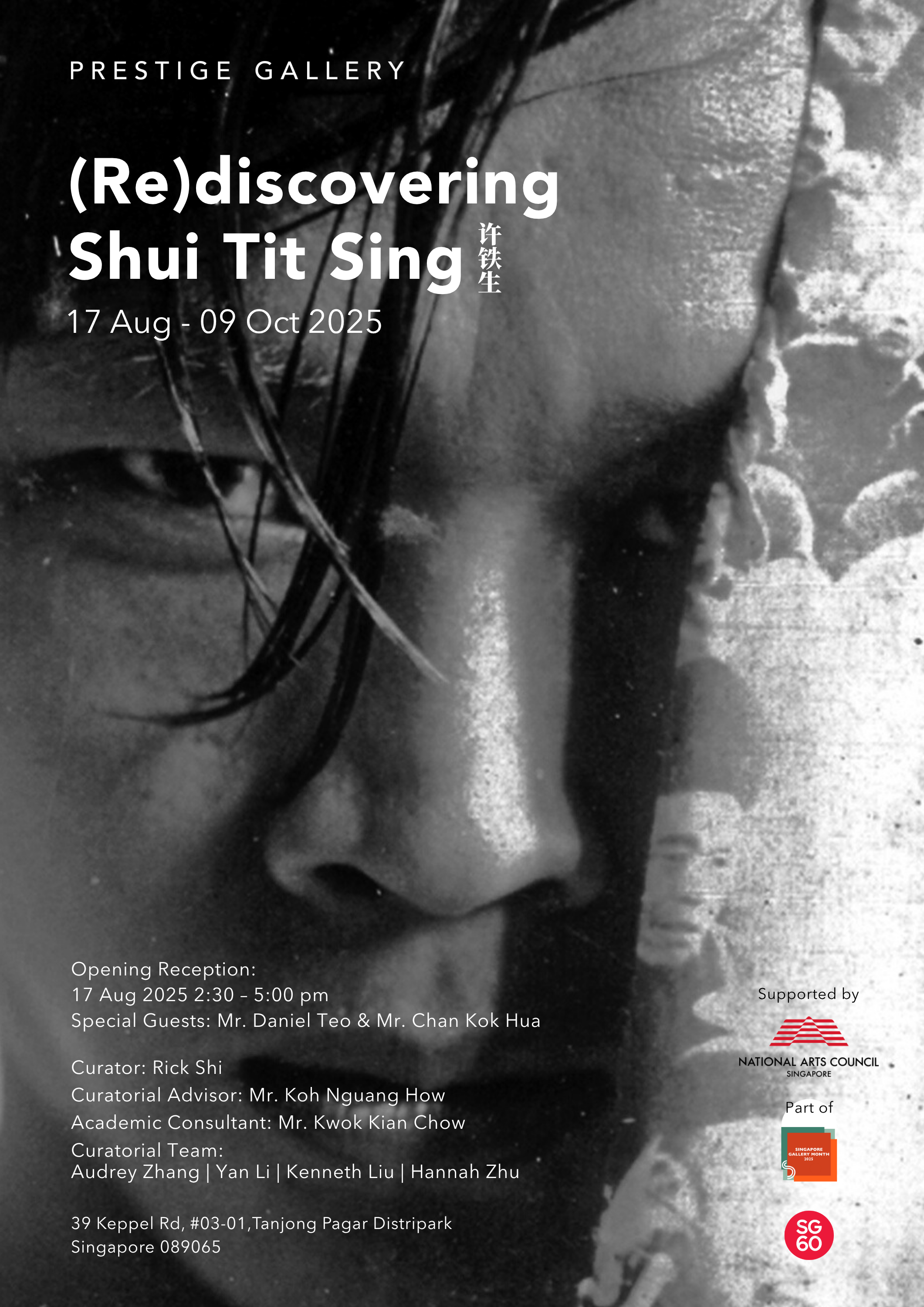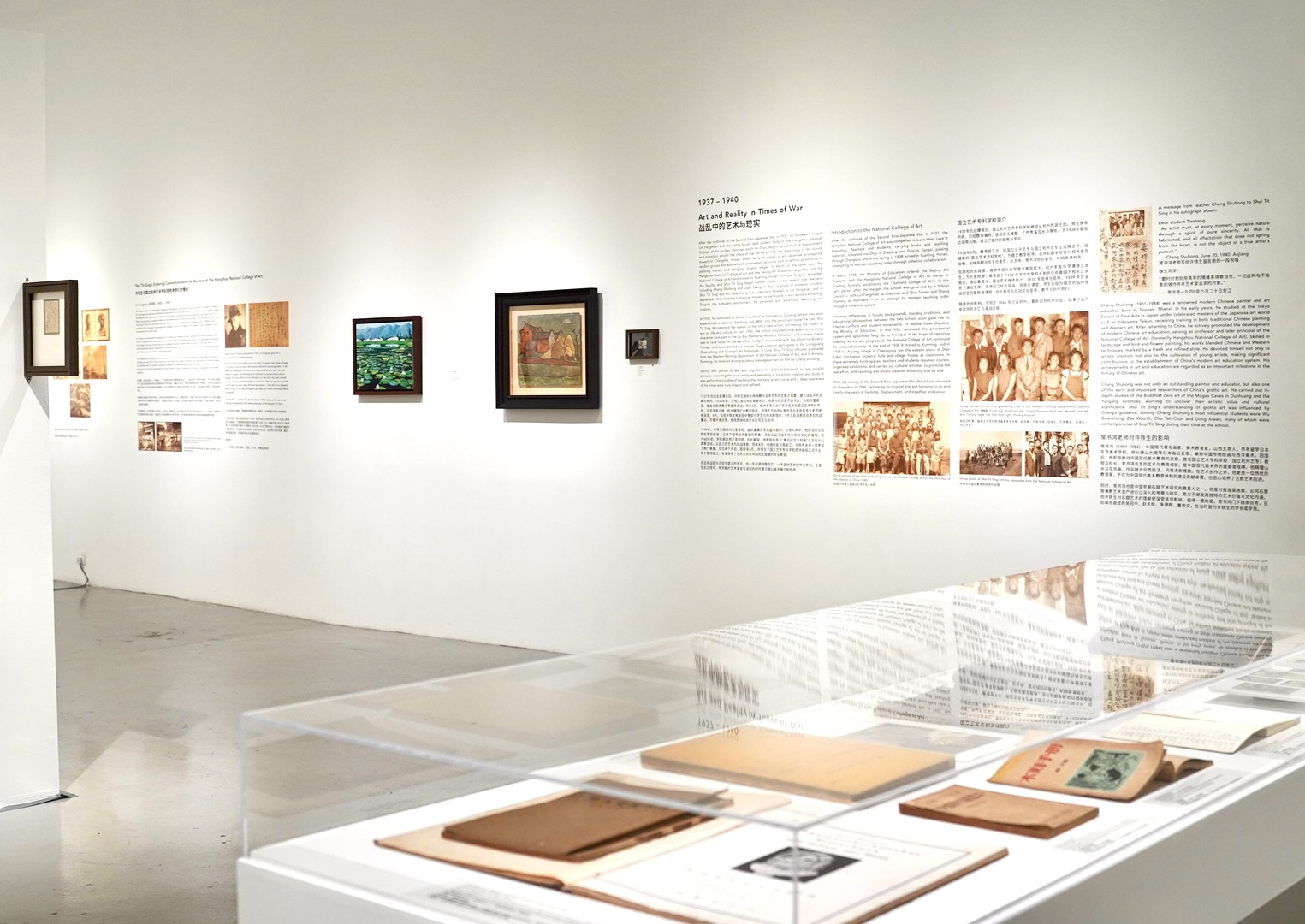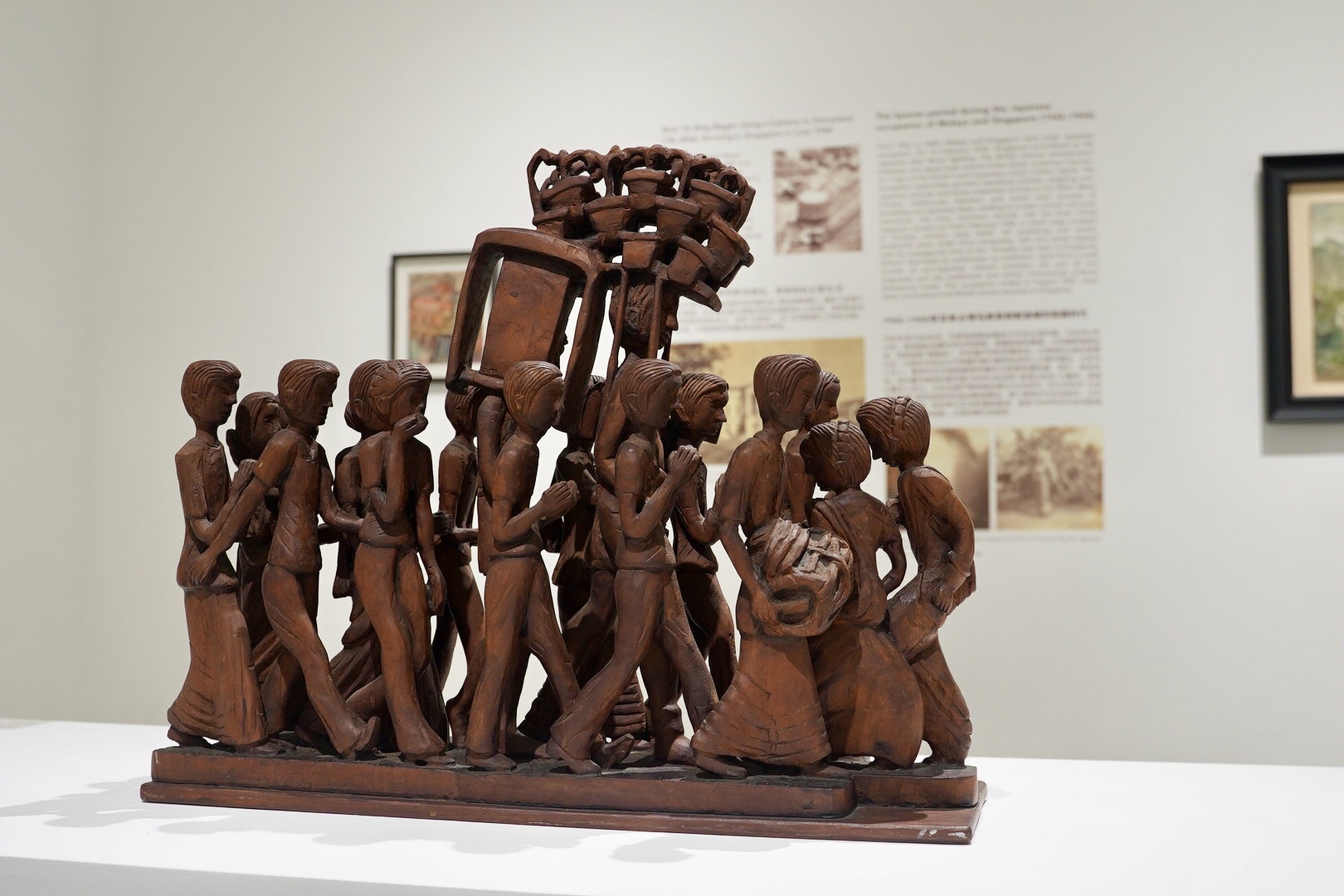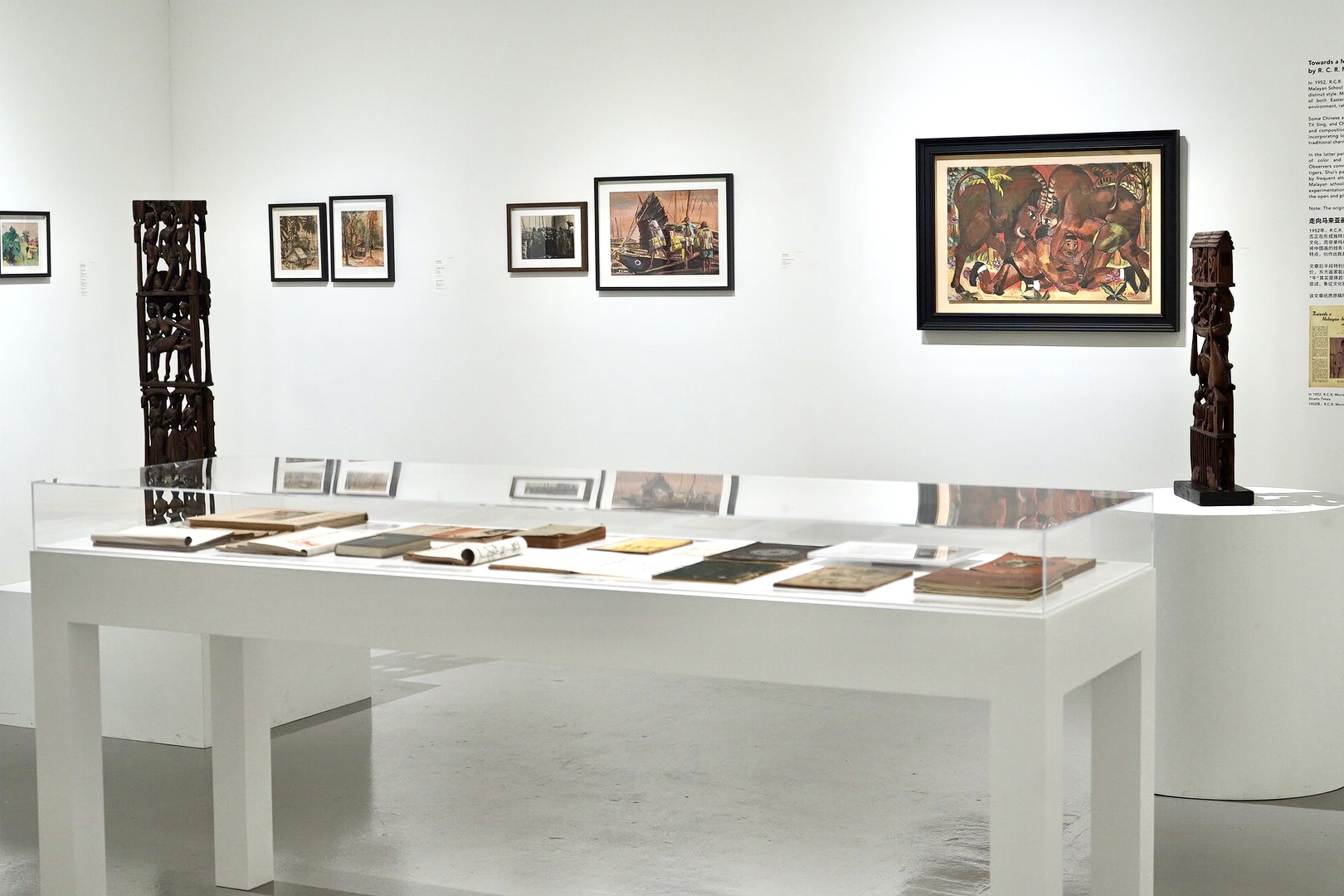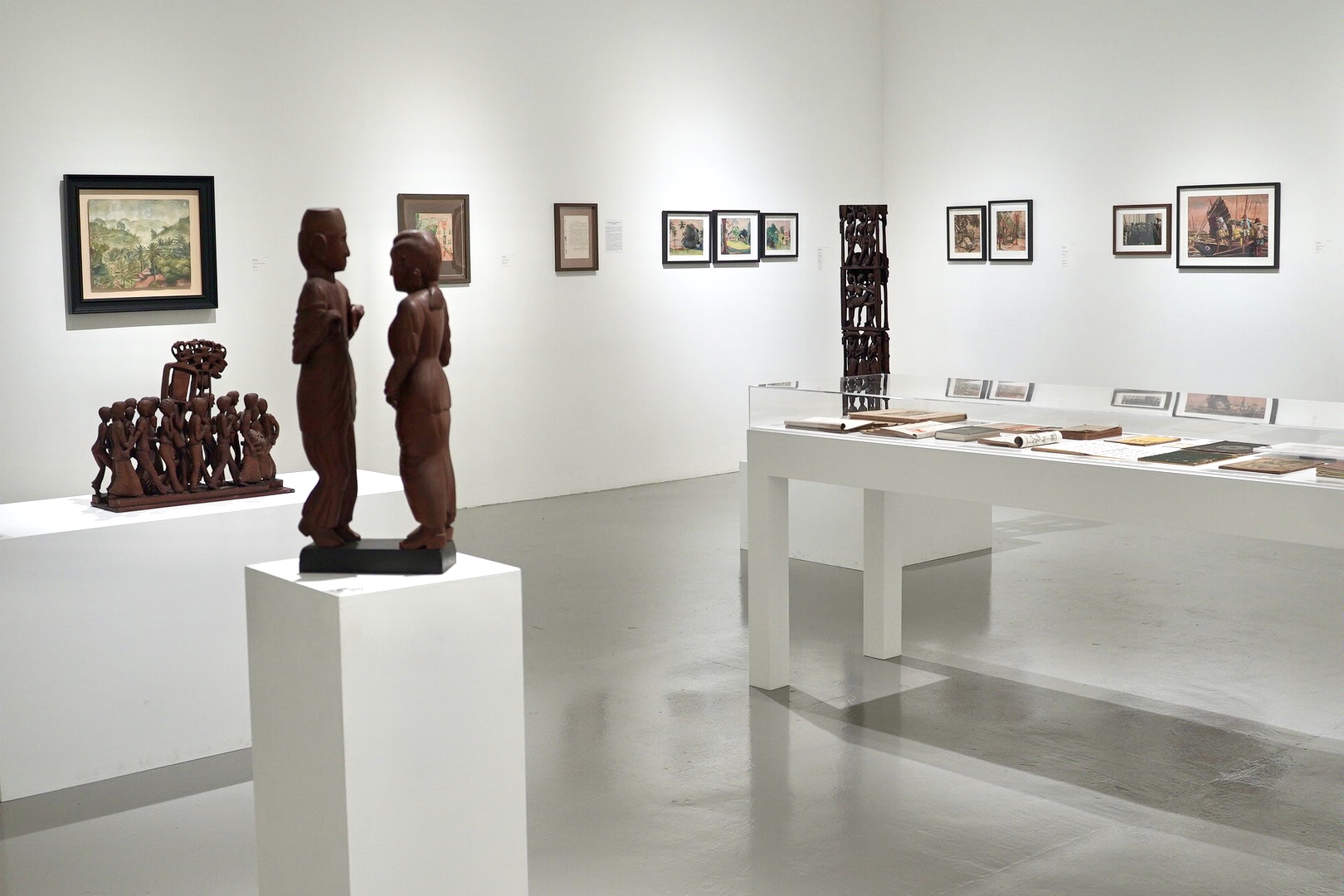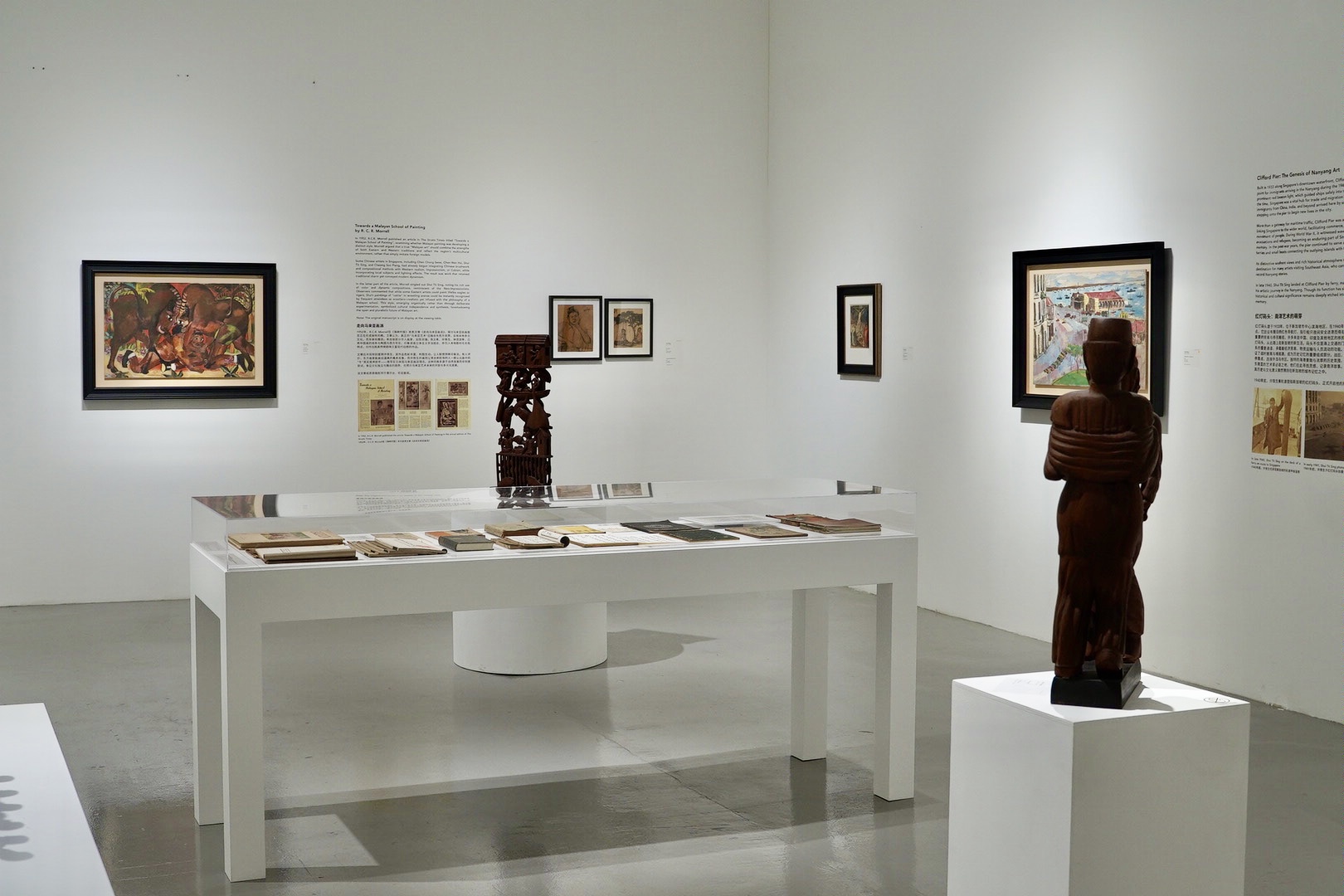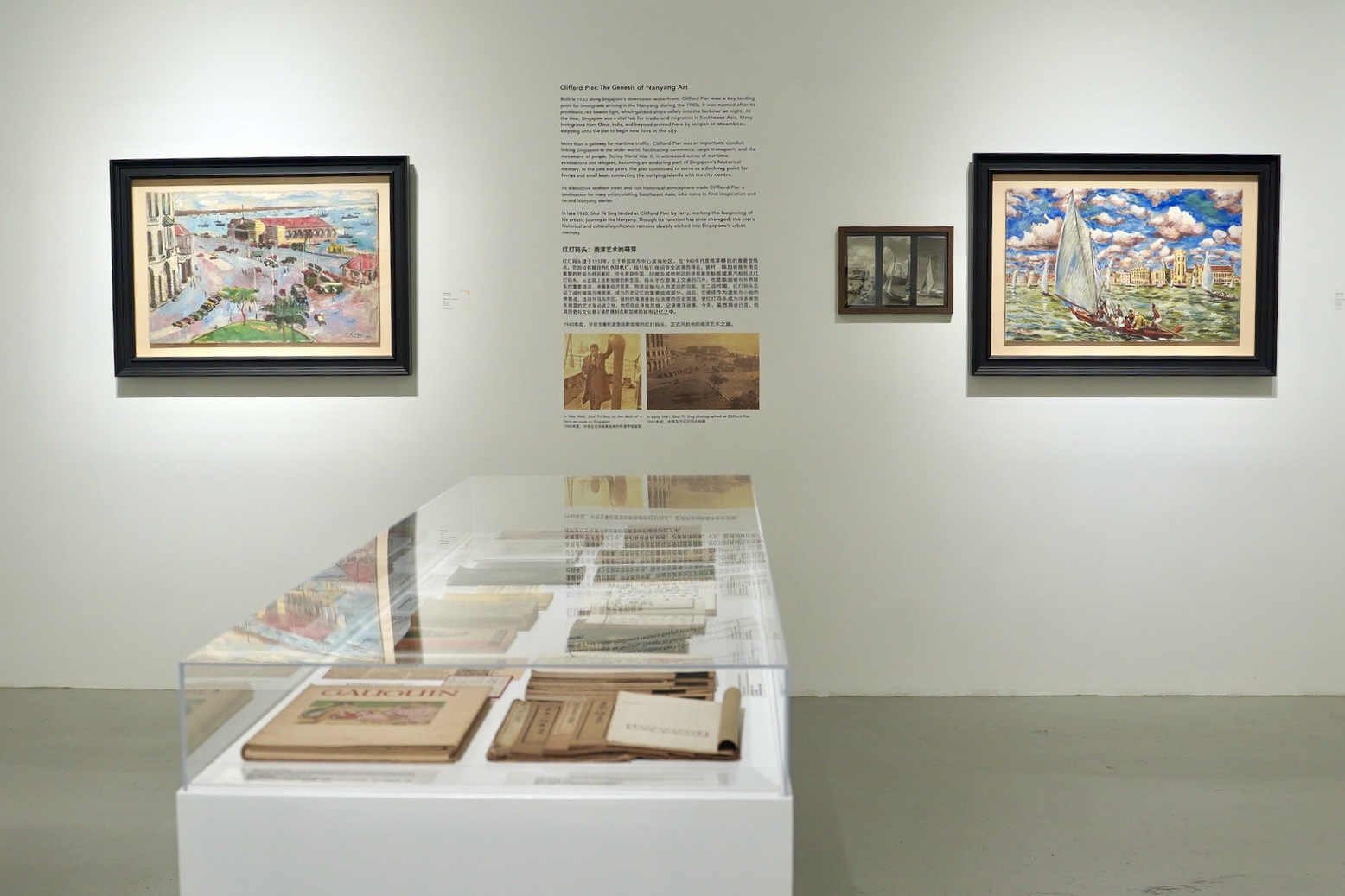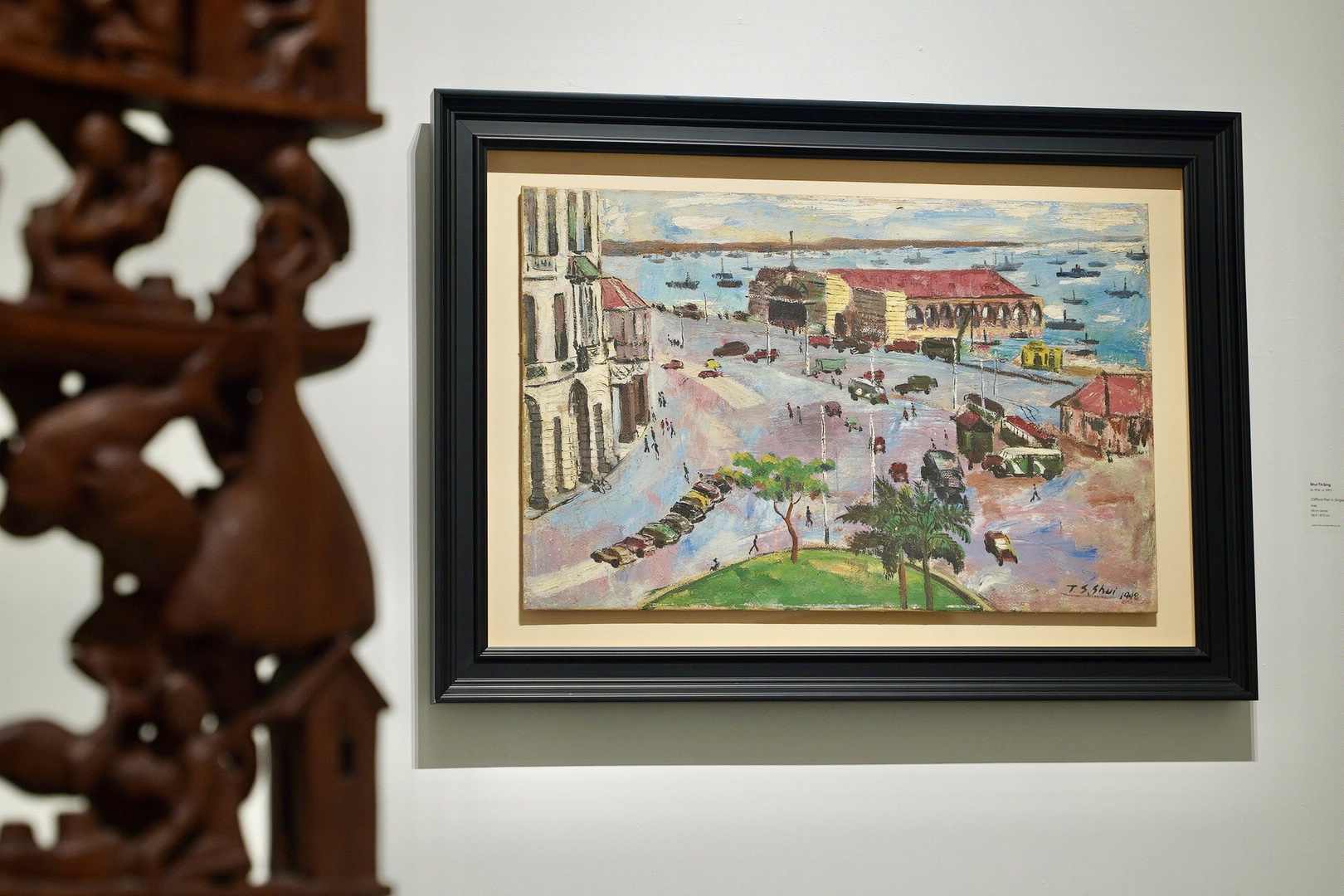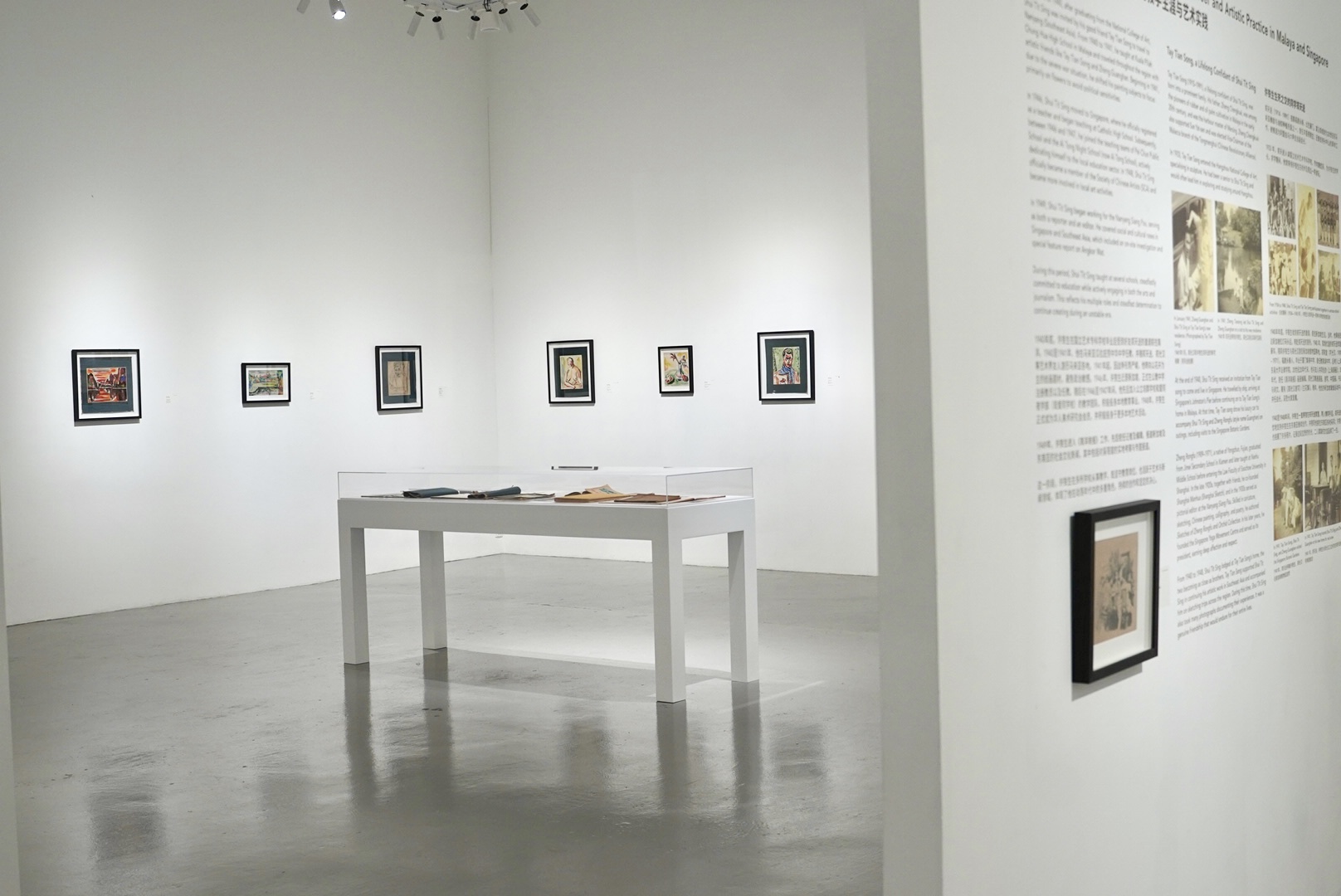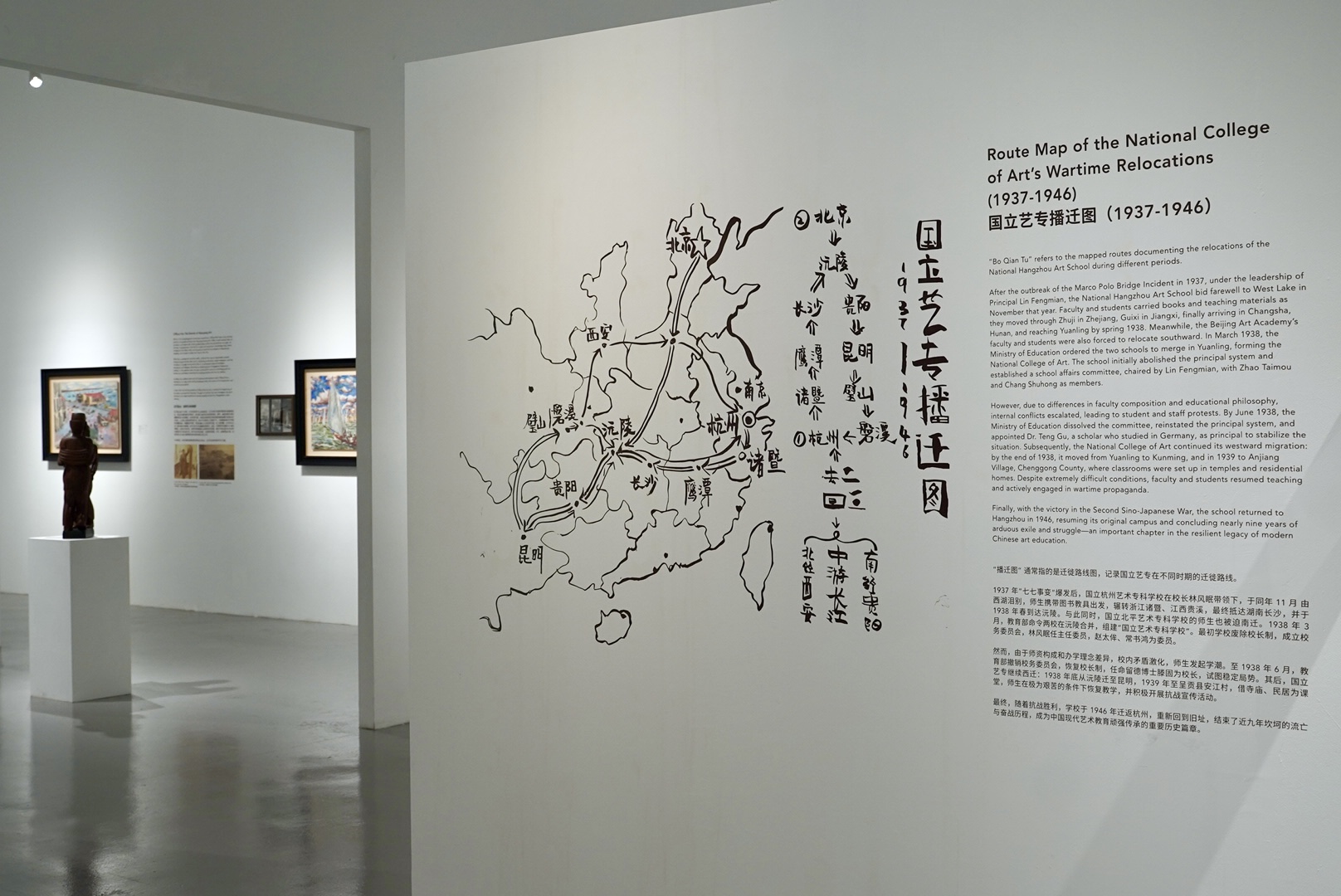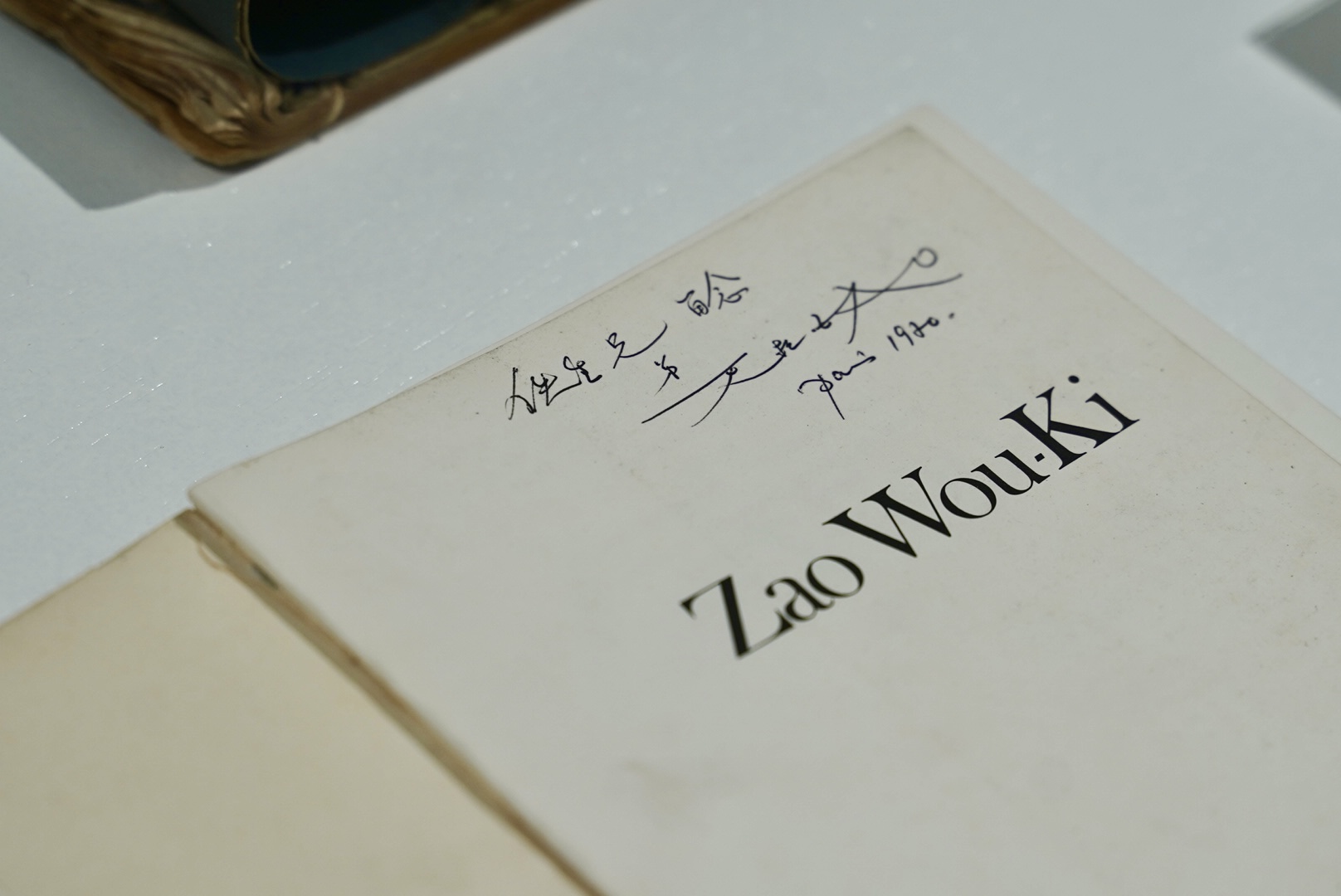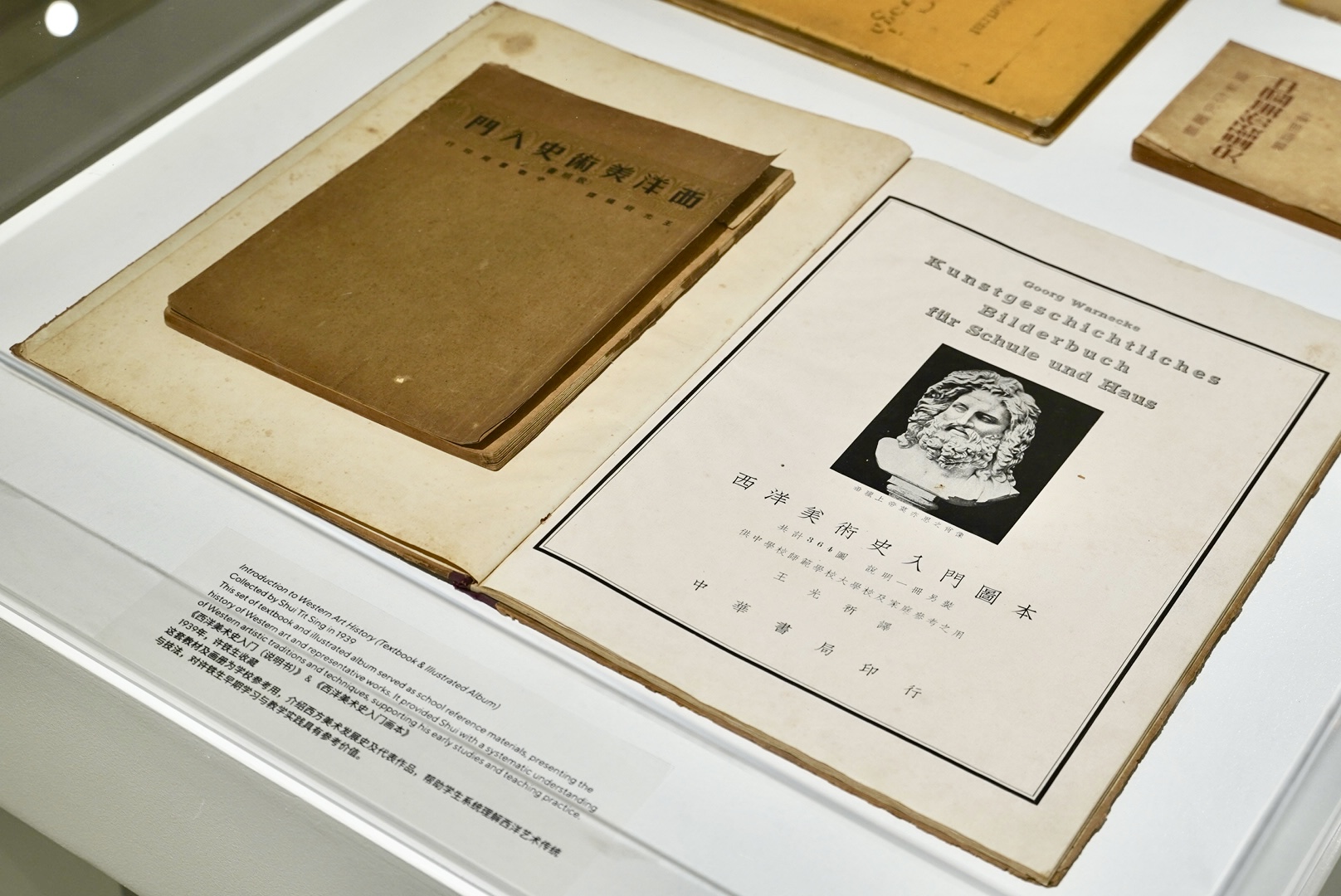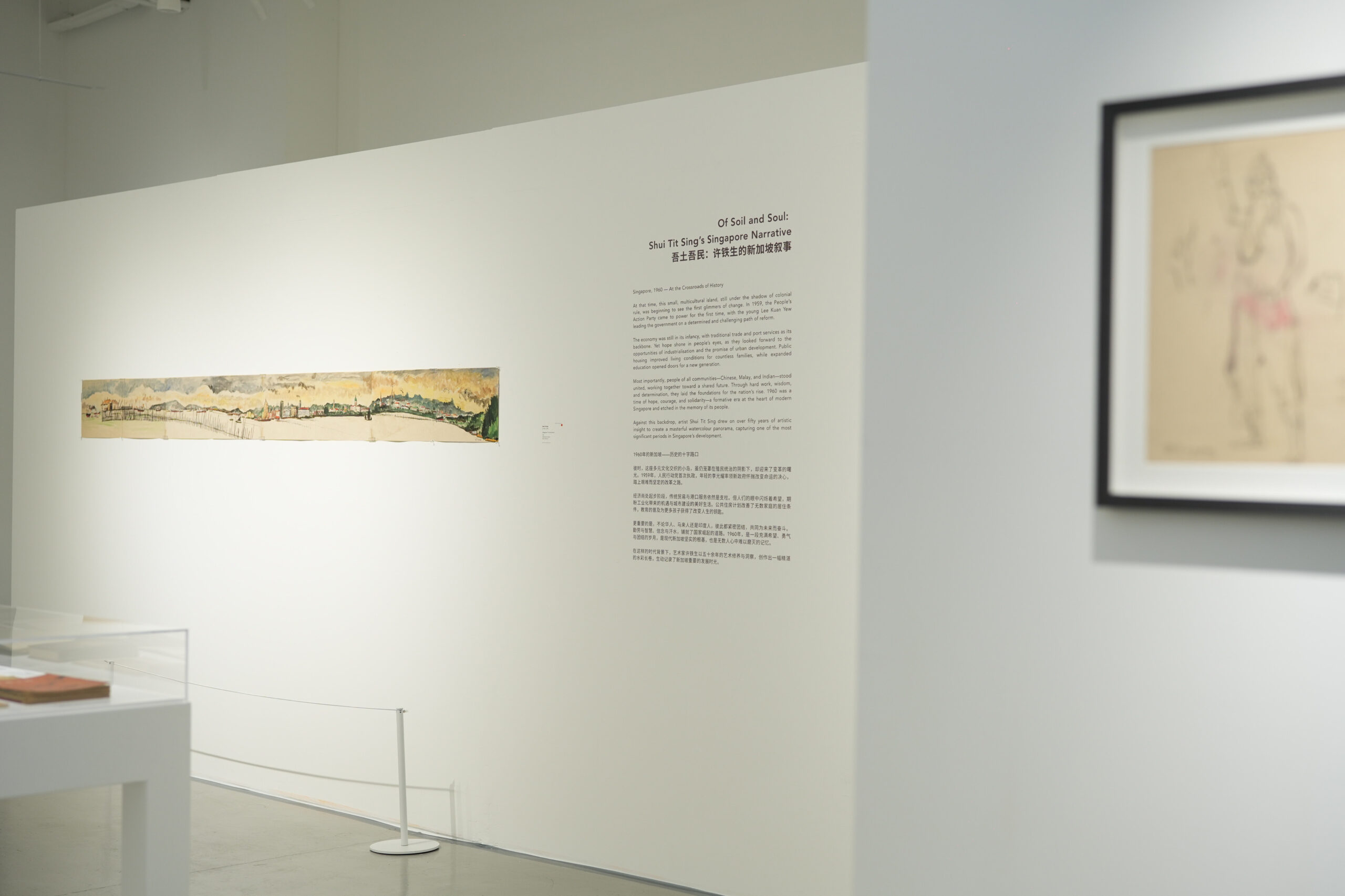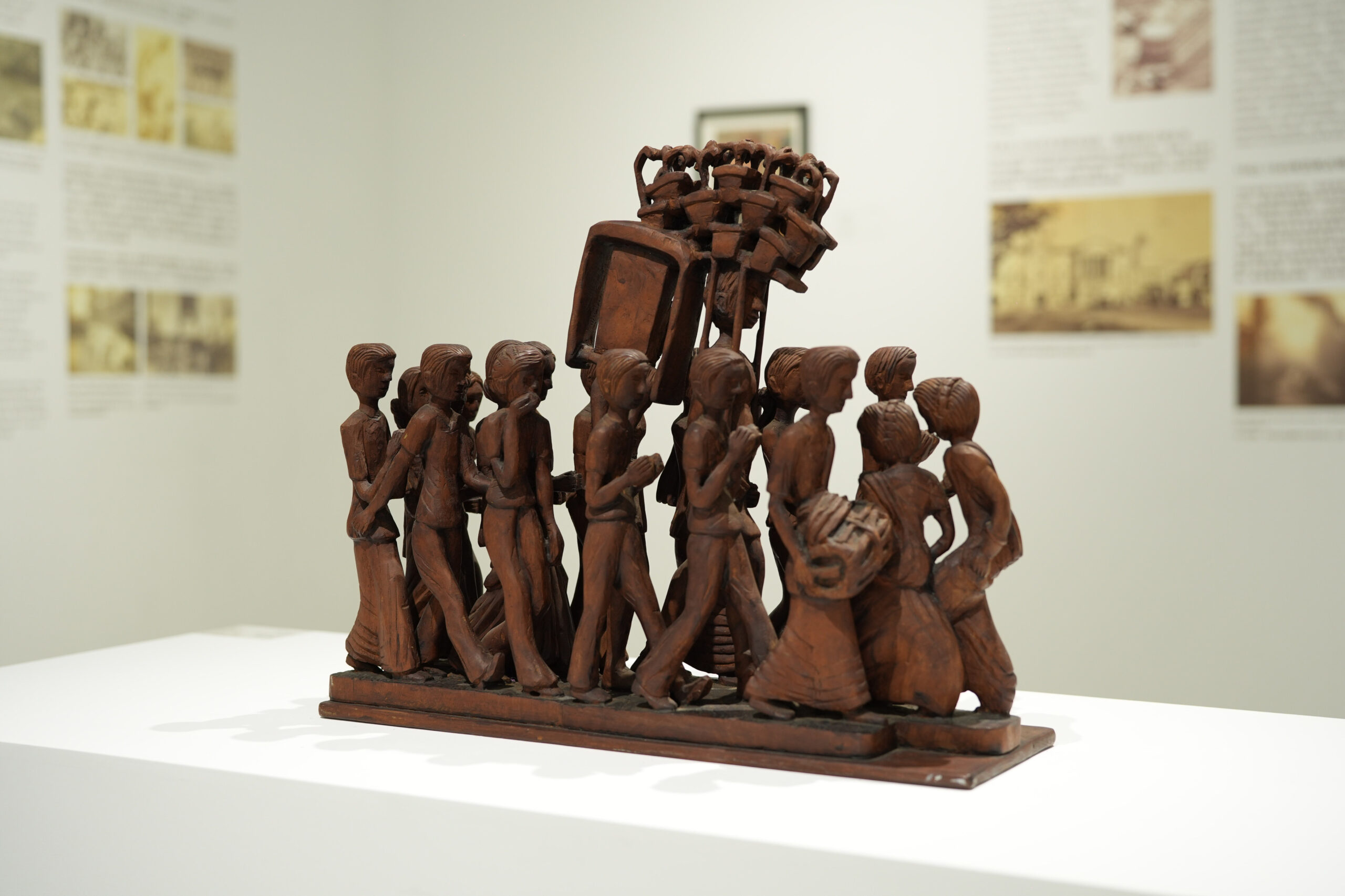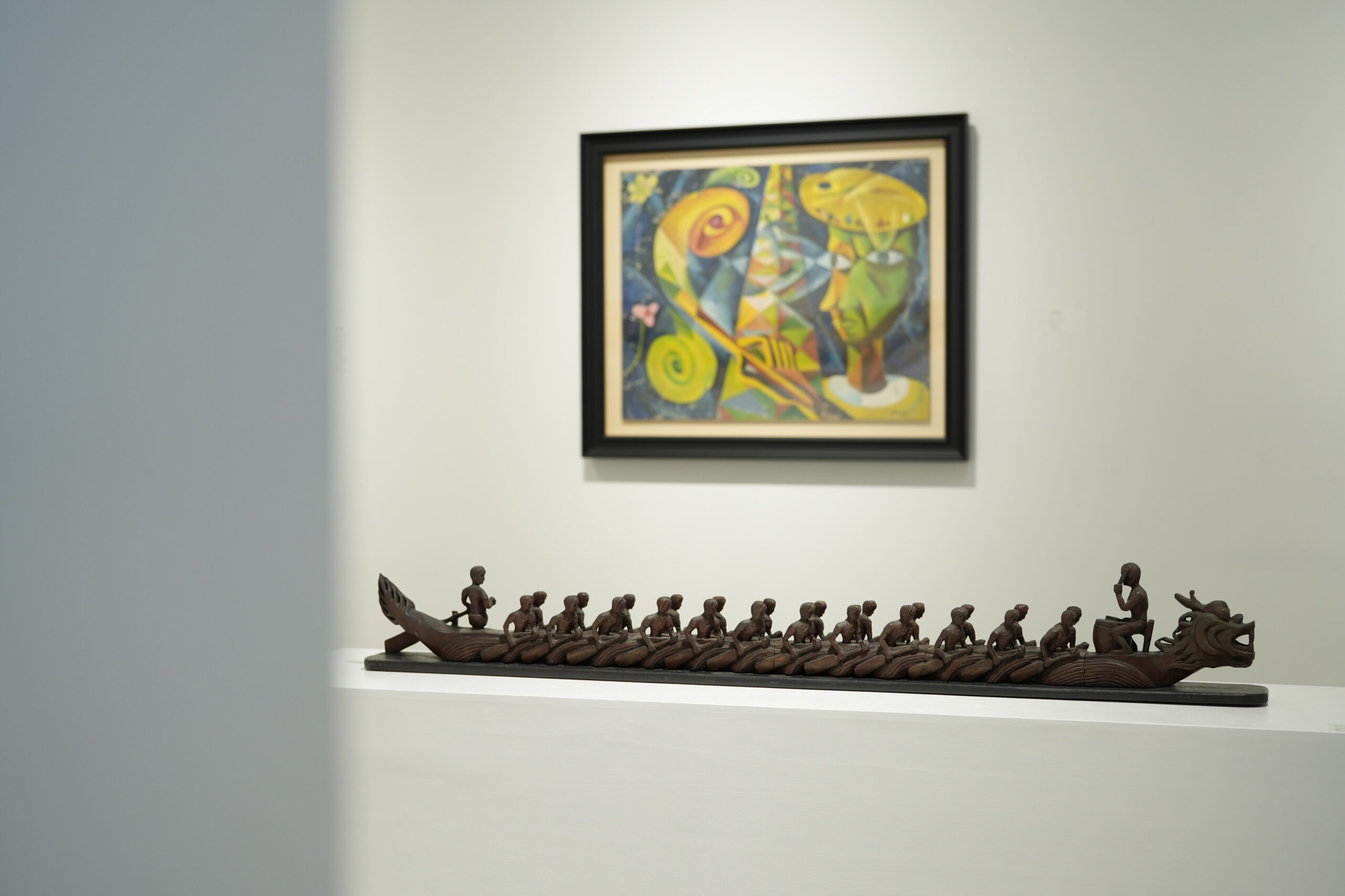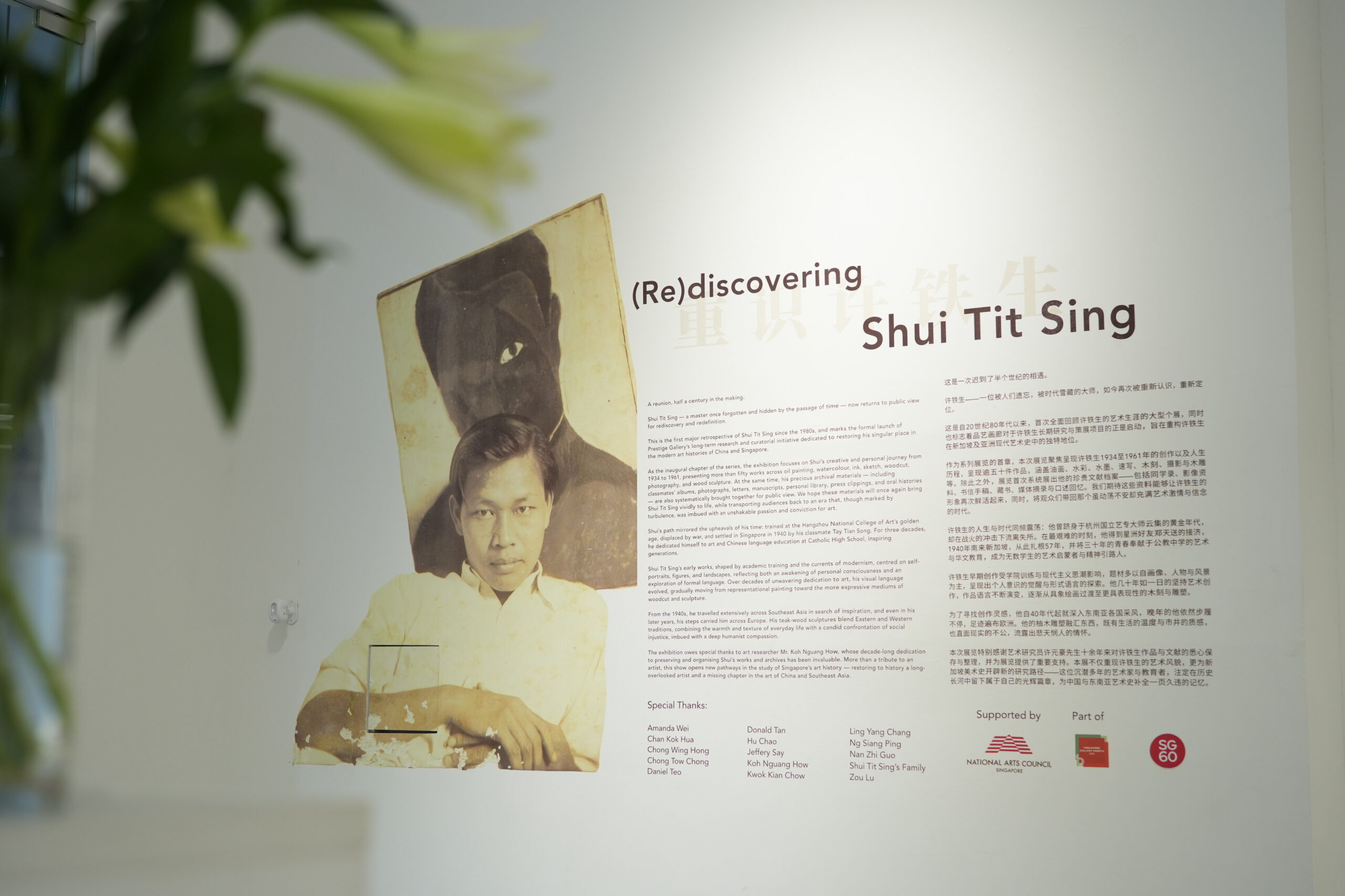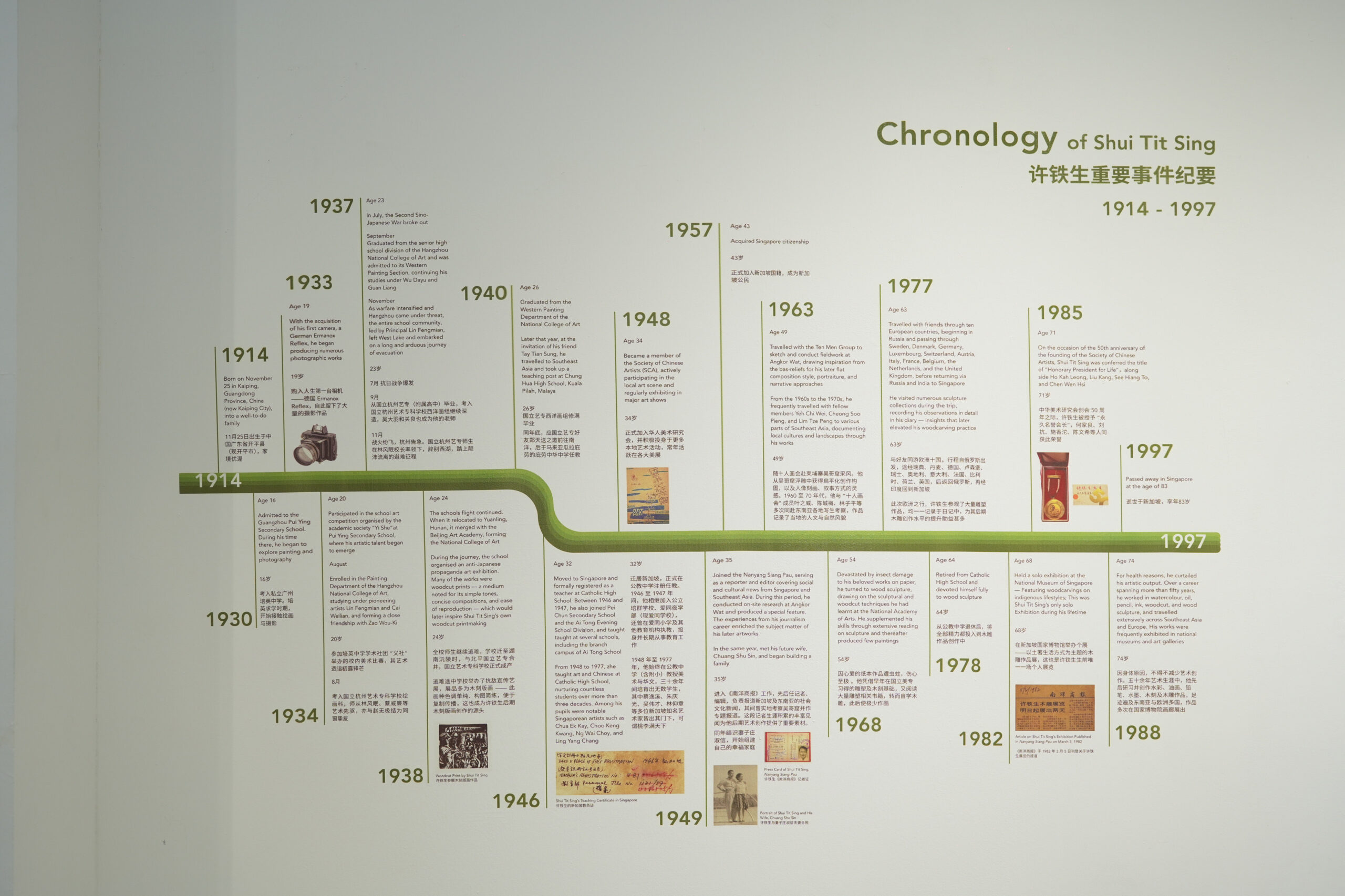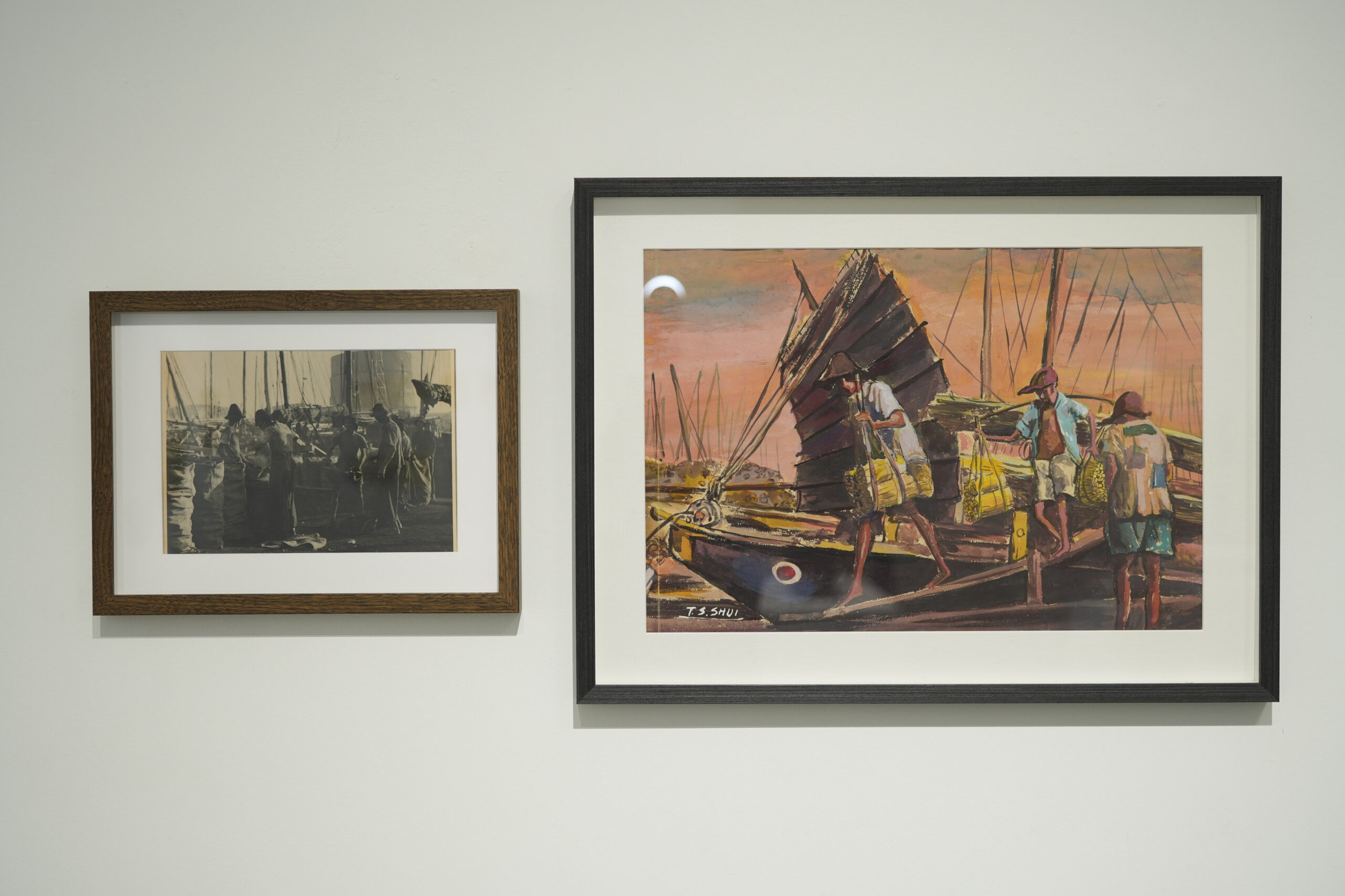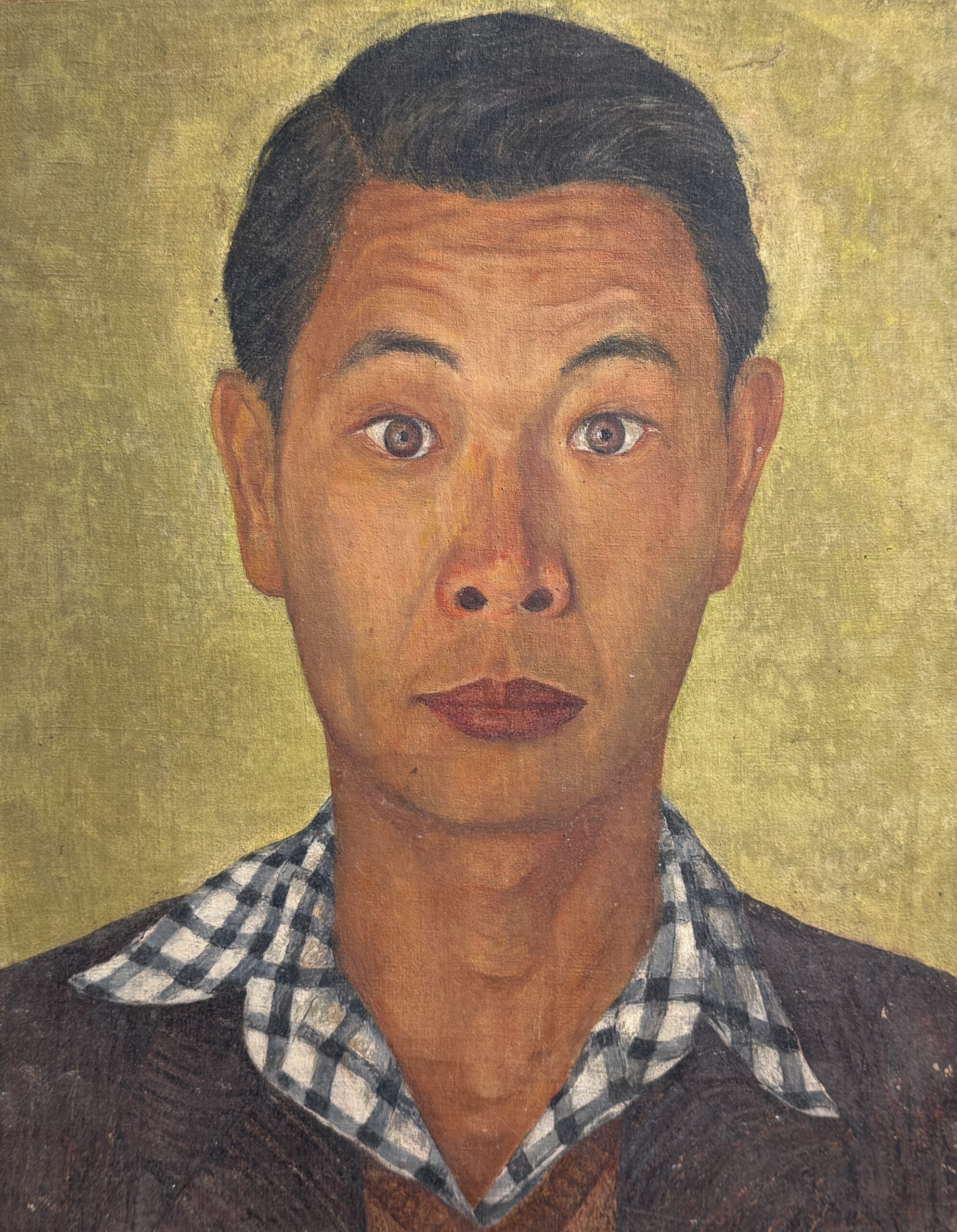On View
(Re)discovering Shui Tit Sing
Shui Tit Sing’s Solo Exhibition
17 August – 09 Oct 2025
Tue – Sun: 11am – 7pm
Click Here to Download the Exhibition Catalog
Exhibition Details:
(Re)discovering Shui Tit Sing
Shui Tit Sing‘s Solo Exhibition
17 Aug – 09 Oct 2025
Curator: Rick Shi
Curatorial Advisor: Mr. Koh Nguang How
Academic Consultant: Mr. Kwok Kian Chow
Curatorial Team: Audrey Zhang, Yan Li, Kenneth Liu, Hannah Zhu
Prestige Gallery:
39 Keppel Rd, Lobby A #03-01
Tanjong Pagar Distripark, Singapore 089065
Opening Reception
17 Aug 2025
2:30 – 5:00 pm
Curator’s Talk by Koh Nguang How
23 Aug 2025
3:00 – 5:00 pm
Panel Discussion
Moderator: Kwok Kian Chow
Panelists: Koh Nguang How, Jeffrey Say, Dr. Hu Chao, Dr. Nan Zhi Gu, Audrey Zhang
30 Aug 2025
3:00 – 5:00 pm
Prestige Gallery is proud to present (Re)discovering Shui Tit Sing, the first major solo exhibition in nearly four decades dedicated to Shui Tit Sing (1914–1997), a pioneering yet under-recognised figure in 20th-century Asian art. Opening on Sunday, 17 August 2025, the exhibition marks the launch of a long-term research and curatorial initiative to reintroduce Shui’s legacy to contemporary audiences and position his contributions within the broader development of modern art in Southeast Asia.
Featuring over 50 works — spanning watercolours, oil paintings, ink works, woodblock prints, and wood sculptures — alongside rare archival materials such as letters, teaching notes, interviews, and photographs, many shown publicly for the first time, the exhibition offers a rich view of Shui’s artistic evolution and his roles as an educator, cultural bridge, and creative visionary.
Born in Kaiping, Guangdong in 1914, Shui graduated from the National Hangzhou Art Academy in 1937 and completed his studies in Western Painting in 1940 under leading Chinese modernists including Lin Fengmian, Pan Tianshou, Wu Dayu, Cai Weilian, Chang Shuhong, and Guan Liang. He was a classmate of Zao Wou-Ki and a senior to Chu Teh-Chun and Wu Guanzhong. His early works, marked by rigorous academic training and a modernist sensibility, explore self-portraiture, landscapes, and working-class themes with emotional depth and structural clarity.
In 1940, Shui moved to Singapore at the invitation of fellow sculptor Tay Tian Song. After the war, he settled permanently, teaching art and Chinese at Catholic High School from 1948 to 1977, shaping generations of students while producing art that reflected the social realities of the region — particularly through his 1950s woodcuts.
The 1960s and 70s saw Shui actively engaged with the Society of Chinese Artists and the Ten Men Art Group, travelling across Malaysia, Thailand, and Cambodia. These journeys inspired vibrant depictions of regional life and a cross-cultural visual language blending Western techniques with Southeast Asian motifs. From the late 1960s, Shui devoted himself to wood sculpture, becoming one of the first artists in Singapore to elevate the medium to fine art. His minimalist yet expressive forms — portraying dancers, villagers, and dragon boat races — celebrated the human body and communal spirit.
Special guests at the opening include Mr. Kwok Kian Chow, former Director of the Singapore Art Museum and Academic Advisor to the exhibition; Professor Chong Tow Chong, President of the Catholic High School Alumni Association; cultural advocate Mr. Daniel Teo; and Mr. Chan Kok Hua, collector and owner of Qiu Zhai. The exhibition is curated by Audrey Zhang and Rick Shi with support from a collaborative team, and art historian Koh Nguang How as Curatorial Consultant, contributing significant archival material and scholarly insight.
Supported by the National Arts Council and part of Singapore Gallery Month, the exhibition has been recognised by the China Academy of Art, which will feature Shui’s work in its centennial celebrations in 2028.
(Re)discovering Shui Tit Sing encompasses paintings, sculptures, archives, biography, and historical context. Highlights include a presentation by Koh Nguang How on 23 August 2025 and a forum on 30 August 2025, moderated by Kwok Kian Chow, bringing together art historians and cultural scholars from Singapore and China to discuss Shui’s early training, networks in China, and creative journeys in Singapore and Southeast Asia. Through this rediscovery, the exhibition invites reflection on the intersections of memory, migration, pedagogy, and cultural legacy — offering not only a renewed appreciation of Shui’s work, but also fresh perspectives on Singapore’s art history.
About the Artist Shui Tit Sing
Self Portrait, c. 1939-1940, Oil on canvas, 42.4 x 33.0 cm
Shui Tit Sing (1914–1997) was a Chinese-born Singaporean artist and educator whose artistic practice evolved from ink and oil painting to a distinguished body of work in teakwood sculpture. Celebrated for his sensitive depictions of ordinary life, Shui’s oeuvre blends traditional Eastern aesthetics with a grounded humanism that reflected his lifelong commitment to bridging art and lived experience.
Shui was born in China in 1914 and received his secondary education at Pui Ying Secondary School in Guangzhou, where he was introduced to the visual arts under the mentorship of renowned photographer Hou Tieh Hua. In 1934, he enrolled in the Hangzhou National College of Art—then under the directorship of Lin Fengmian—where he studied painting. His teachers included several of China’s modern art pioneers, among them Lin Fengmian, Pan Tianshou, Wu Dayu, Cai Weilian, Chang Shuhong, and Guan Liang. Lin once praised Shui as a student with “an iron will.” During his years in Hangzhou, Shui formed enduring friendships with fellow students including Zao Wou-Ki, Chuang Hua-Yue, Kao Kuan-Hua, and Cheng Tien-Sung, with whom he lived, created, and exchanged ideas. He graduated from the Department of Painting in 1937 and furthered his studies in Western painting, completing his training in 1940.
In late 1940, Shui emigrated to Malaya upon the invitation of his former classmates Cheng Tien-Sung and Cheng Kwang-Han. From 1941 to 1945, he taught at Chung Hwa Middle School in Jesselton (now Kota Kinabalu), contributing quietly to art education during the turbulent years of World War II. In 1947, Shui moved to Singapore and began a long teaching career, most notably at Catholic High School from 1948 to 1977, as well as at Ai Tong Primary School and other local institutions. In 1957, he became a Singaporean citizen.
Alongside teaching, Shui maintained an active studio practice and exhibited widely in national exhibitions. He was a long-standing member of the Society of Chinese Artists and participated in group exhibitions across Singapore. During the 1960s and 1970s, he joined the Ten Men Art Group on study tours across Southeast Asia, where he painted, photographed, and later sculpted from observation, deepening his commitment to portraying the daily lives of local communities.
A pivotal shift in Shui’s career occurred in 1968 when he turned exclusively to sculpture. Working primarily in teak, his carvings portrayed fishermen, farmers, labourers, and women at work—subjects rendered with humility, clarity, and a deep reverence for human dignity. He once stated that his sculptures must be “oriental in spirit and grounded in reality.” Fellow artist and sculptor Chong Fah Cheong suggested that Shui embrace a darker patina in his wood surfaces to evoke a sense of age and depth—a technique Shui adopted and made his own, developing a distinctive, timeworn visual language.
That same year, under the recommendation of Cheng Tien-Sung, then president of the Society of Chinese Artists, Shui was appointed to the society’s executive committee, working alongside artists such as Tan Wen Xi, Tan Jin Hao, Lim Yew Kuan, and Lim Tze Peng. His contributions were instrumental to the society’s development during a critical period in its history.
Though widely respected as an educator and sculptor in Singapore, Shui remained deeply influenced by his early artistic foundations. He carried with him the ethos of his teacher Lin Fengmian—“to fight for art”—throughout his life. In his later years, Shui travelled extensively, taking thousands of photographs and translating his impressions of international life into wood sculptures. His work, while rooted in Chinese modernism, increasingly reflected a global awareness.
Shui Tit Sing passed away in Singapore in 1997. His legacy lives on through his many students, his contributions to Singapore’s early art institutions, and a body of work that stands as a quiet yet enduring testimony to a life devoted to art and education.
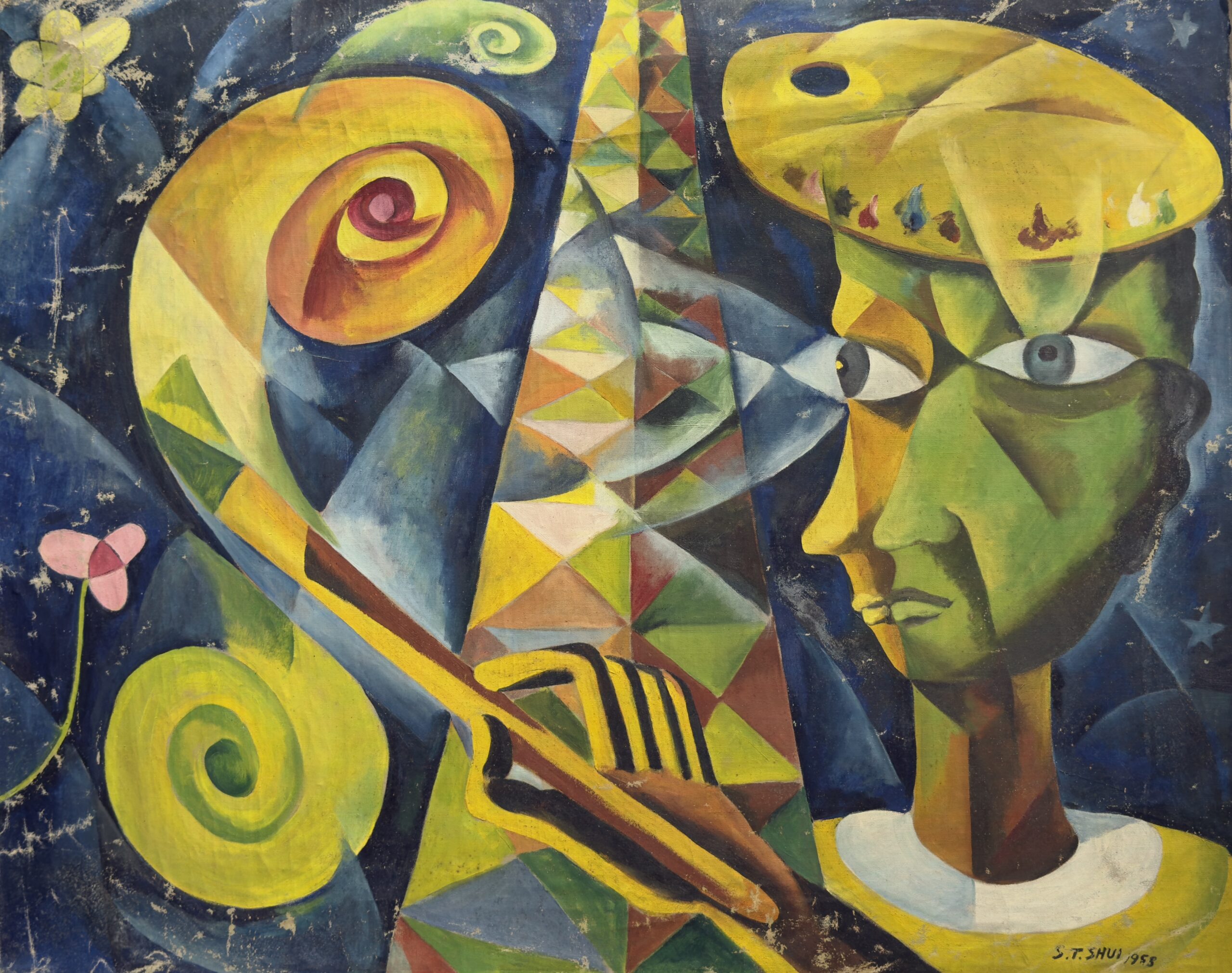
Tribute to Picasso, 1958, Oil on canvas, 78.0 x 99.0 cm
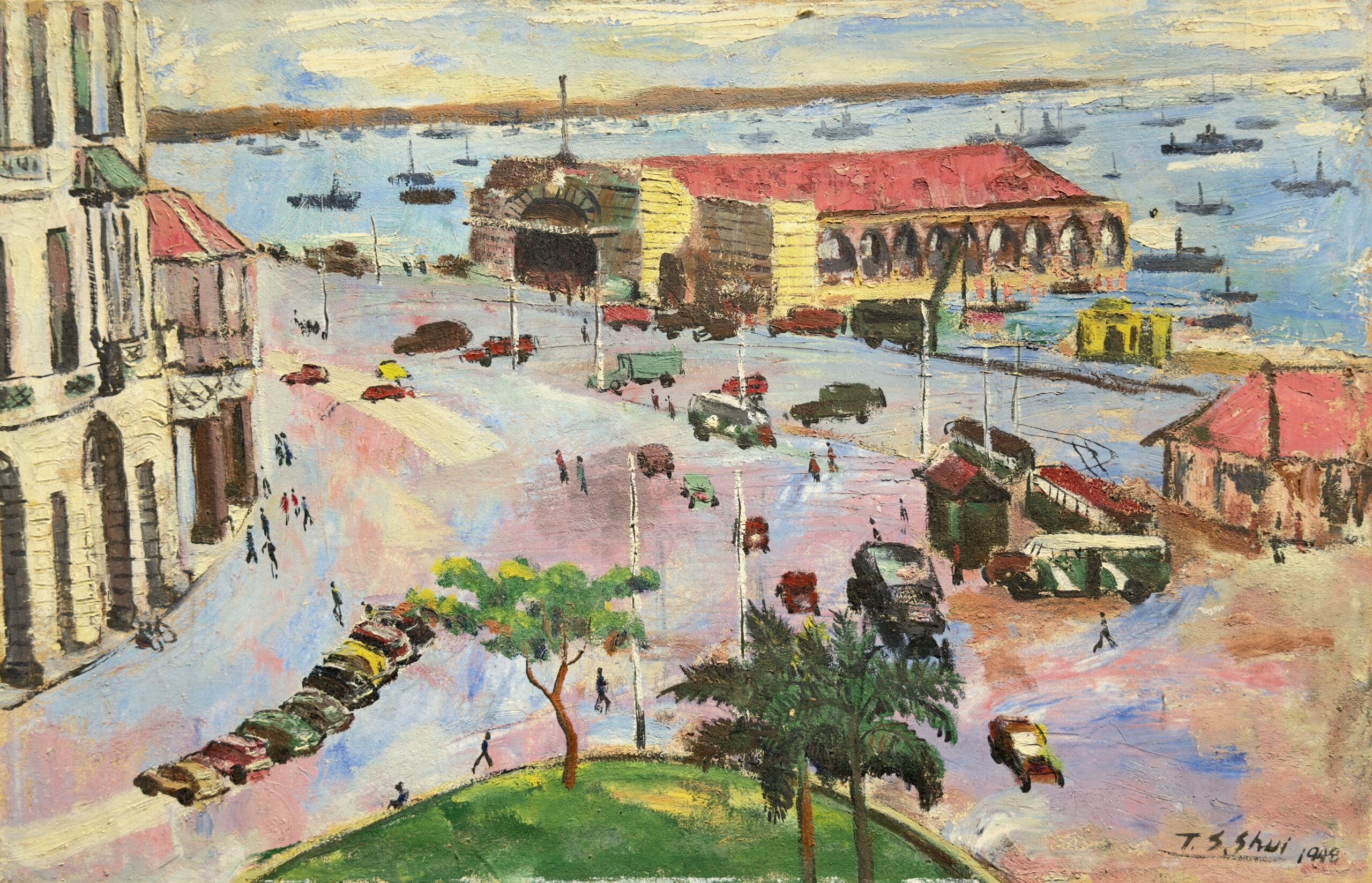
Clifford Pier in Singapore, 1948, Oil on canvas, 56.0 x 87.0 cm
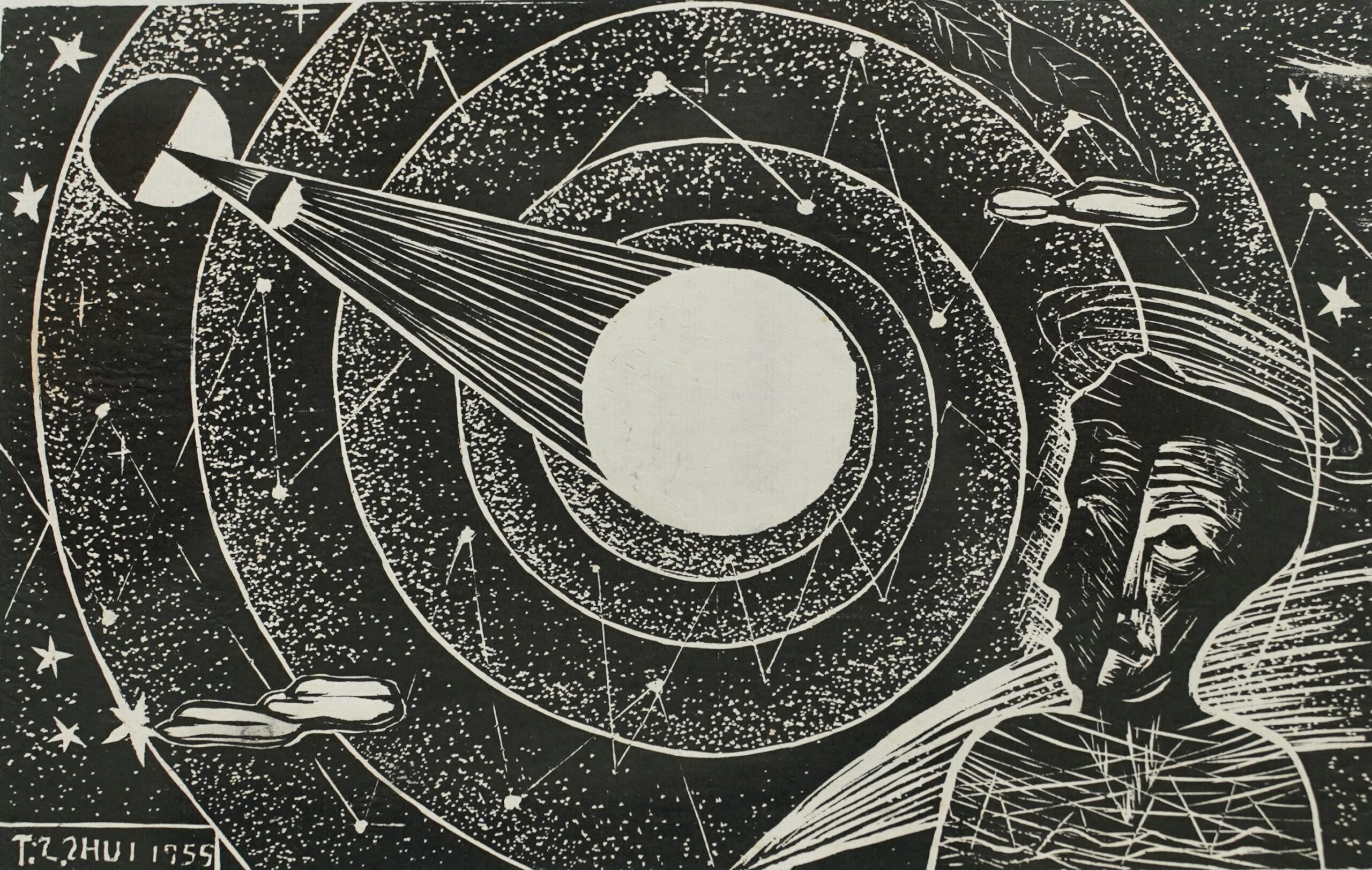
Solar Eclipse, 1955, Woodcut print, 13.0 x 20.6 cm
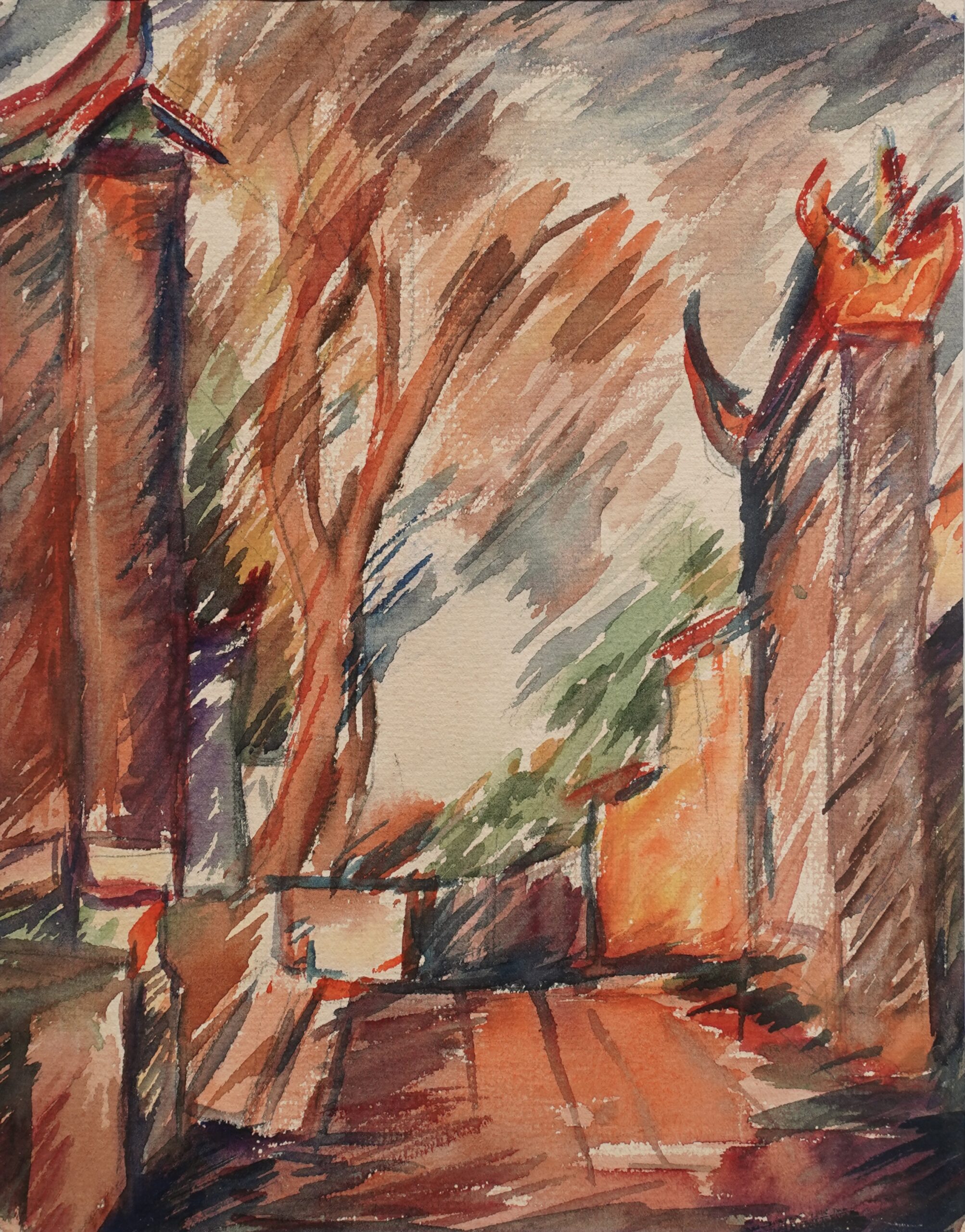
Street Scene, c. 1937, Watercolour on paper, 29.5 x 23.0 cm
Key Stages of Shui Tit Sing’s Life
1930 – 1934
Pui Ying Secondary School and Early Artistic Explorations
Shui Tit Sing was born in 1914 in Kaiping, Guangdong. Encouraged by his family from a young age, he began to study painting. In 1930, he was admitted to Guangzhou Pui Ying Secondary School, where he began to receive more systematic training in fine arts and photography. During his time at the school, he studied sketching, oil painting, and photography under the tutor of Hou Tieh Hua, gradually building his interest in and ideas about art.
In his spare time, he deepened his knowledge through art books and actively took part in community activities like “YeeShen”. He also organized art competitions within the school, beginning to experiment with the practices of curating and exhibiting. In 1933, he purchased the first camera of his life and took his first photograph near the school. In the summer of 1934, he successfully passed his graduation examinations, receiving a Certificate of Study and a Graduation Diploma, officially concluding his time at Guangzhou Pui Ying Secondary School.
During this period, Shui Tit Sing demonstrated a high degree of self-awareness and initiative in his approach to art, which laid a solid foundation for his future path in the art world.
1934 – 1937 Forging Skills at the Hangzhou National College of Art
In the autumn of 1934, Shui Tit Sing enrolled in Hangzhou National College of Art to study painting and actively participated in sketching courses from the very beginning. Starting in 1935, he studied under Lin Fengmian, Cai Weilian, Wu Dayu, Liu Kaiqu, and Wei Da, receiving a systematic modern art education. In his spare time, he taught himself sculpture and became acquainted with a senior student, Tay Tian Song.
He was active in student clubs like the “Photography Society” and the “Luhua Society,” often sketching from life, photographing, and discussing art with classmates such as Zao Wou-Ki and Zhuang Huayue. In 1936, he focused on intensive study at Gushan, working in watercolor, sketching, and oil painting, while also beginning seal carving. During holidays, he traveled to Shaoxing and Haining for artistic inspiration, steadily honing his skills. In early 1937, he returned to Guangzhou to visit friends before traveling with teachers and students to Nanjing to see an exhibition and visit Chen Zhifo. He officially graduated in September that year.
His studies at the Hangzhou National College of Art not only gave Shui Tit Sing a solid artistic foundation but also forged a resilient character that would enable him to persevere in his creative work amidst a turbulent era.
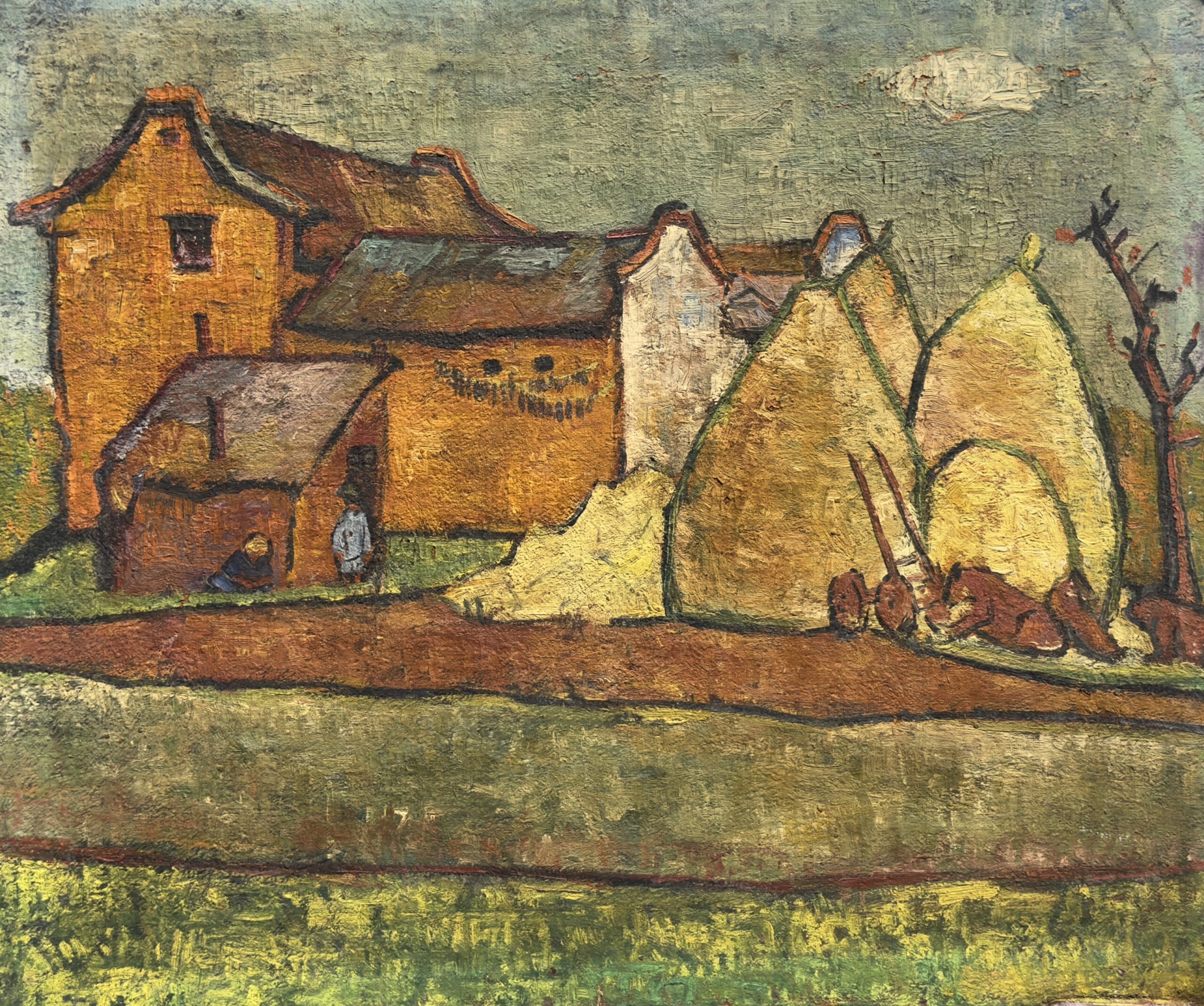
Farm House, c. 1935 – 1937, Oil on canvas, 37.0 x 45.0 cm
1937 – 1940 Art and Reality in Times of War
After the outbreak of the Second Sino-Japanese War in 1937, he followed Principal Lin Fengmian and the entire faculty and student body of the Hangzhou National College of Art as they relocated south to Zhuji, beginning a period of displacement and transition amidst the chaos of war. In early 1938, the main body of the school moved to Changsha, Hunan, where he participated in anti-Japanese propaganda reading groups and assisted with promotional activities such as setting up exhibitions, painting murals, and designing theatre stages. In March of the same year, the Hangzhou National College of Art and the Beijing Art Academy merged to form the National College of Art and moved to Yuanling, Hunan. Principal Teng Gu expanded the faculty, and Shui Tit Sing began further studies under several new teachers, including Chang Shuhong and Guan Liang. In April, a group of students including Shui Tit Sing and Wu Guanzhong bid a reluctant farewell to Lin Fengmian, and in September, they traveled to Nanyue, Hunan, to participate in war resistance training. Despite the turbulent environment, he persisted with watercolor sketching and creation.
In 1939, he continued to follow the school as it moved to Guiyang, where they soon experienced a Japanese bombing raid. With only the pencil and paper he had, Shui Tit Sing documented the scenes of the city’s destruction, witnessing the impact of war on life and culture. In early 1940, the school relocated once again to Kunming, where he took part in the Lu Xun Memorial Woodcut Exhibition and a street charity sale to raise funds for the war effort. In April, he traveled with the school to Anjiang, Yunnan, and accompanied his teacher Guan Liang to participate in the Liangguang (Guangdong and Guangxi) Art Exhibition. In June, Shui Tit Sing officially graduated from the Western Painting Department of the National College of Art, and in Anjiang, Kunming, he received a congratulatory message written for him by Chang Shuhong.
During that period of war and migration, he dedicated himself to two parallel pursuits: recording the cruel reality and persisting in his artistic creation and study. It was within this crucible of hardship that his early artistic voice and a deep awareness of his times were truly shaped and defined.
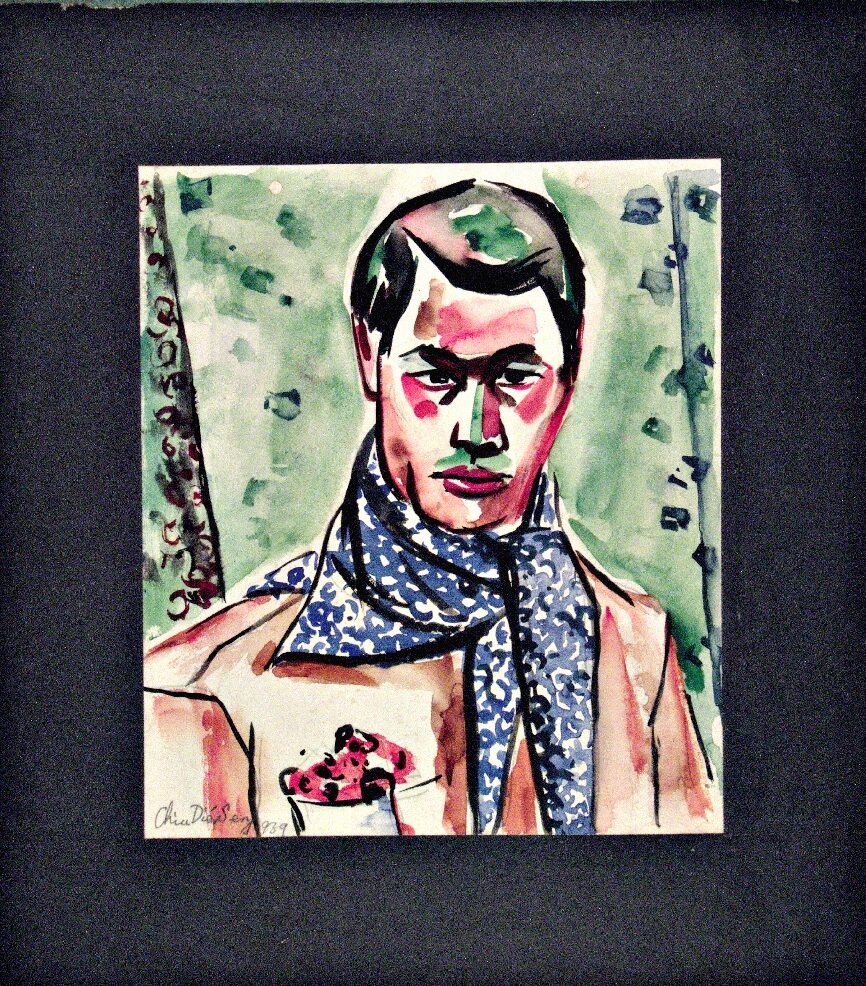
Self Portrait, 1939, Watercolour on paper, 28.5 x 24.6 cm
1940 – 1950 Sojourning and Perseverance: A Teaching Career and Artistic Practice in Malaya and Singapore
At the end of 1940, after graduating from the National College of Art, Shui Tit Sing was invited by his good friend Tay Tian Song to travel to Nanyang (Southeast Asia). From 1940 to 1941, he taught at Kuala Pilah Chung Hua High School in Malaya and traveled throughout the region with artistic friends like Tay Tian Song and Zheng Guanghan. Beginning in 1941, due to the severe war situation, he shifted his painting subjects to focus primarily on flowers to avoid political sensitivities.
In 1946, Shui Tit Sing moved to Singapore, where he officially registered as a teacher and began teaching at Catholic High School. Subsequently, between 1946 and 1947, he joined the teaching teams of Pei Chun Public School and the Ai Tong Night School (now Ai Tong School), actively dedicating himself to the local education sector. In 1948, Shui Tit Sing officially became a member of the Society of Chinese Artists (SCA) and became more involved in local art activities.
In 1949, Shui Tit Sing began working for the Nanyang Siang Pau, serving as both a reporter and an editor. He covered social and cultural news in Singapore and Southeast Asia, which included an on-site investigation and special feature report on Angkor Wat.
During this period, Shui Tit Sing taught at several schools, steadfastly committed to education while actively engaging in both the arts and journalism. This reflects his multiple roles and steadfast determination to continue creating during an unstable era.
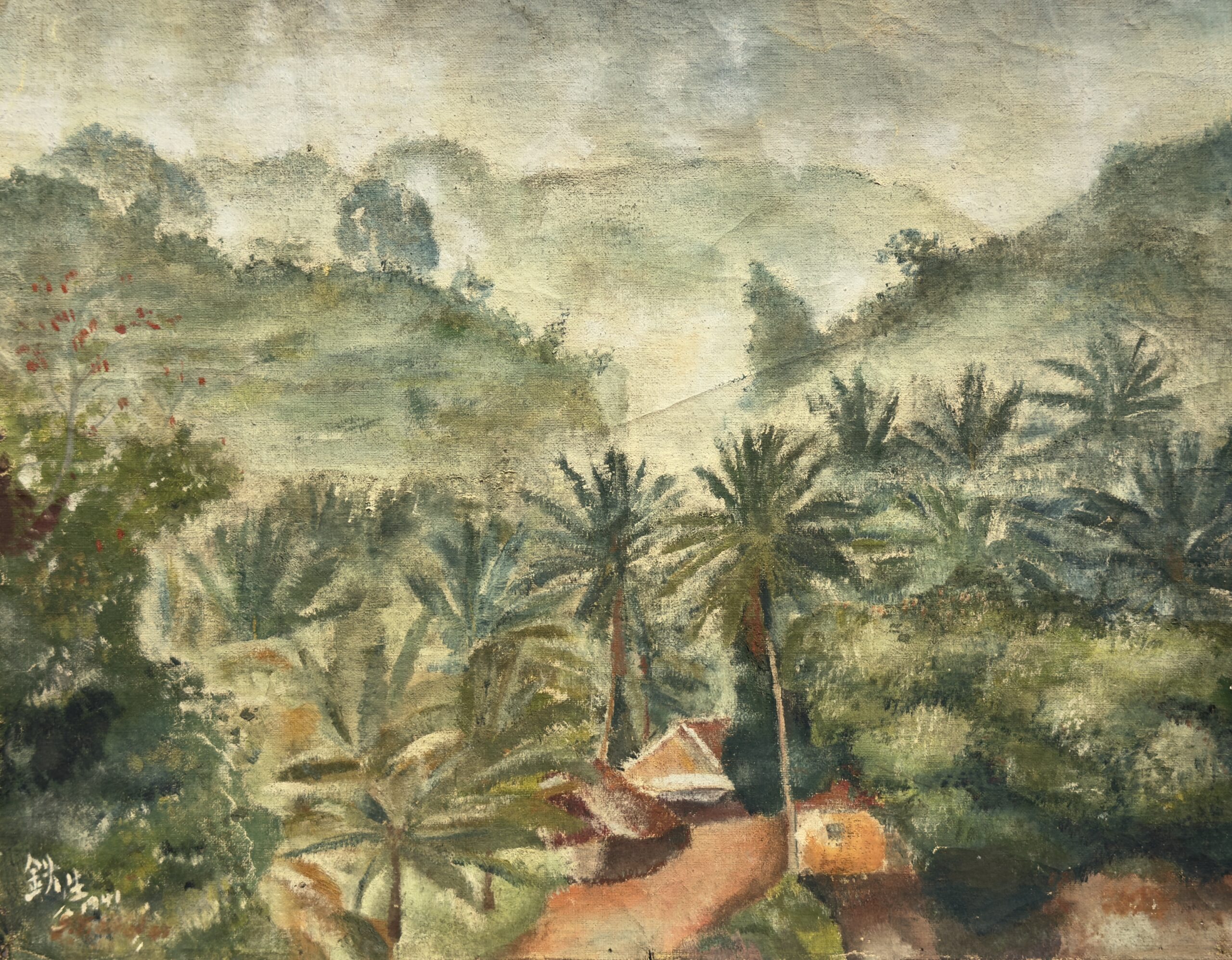
Landscape with Coconut Trees, 1941, Oil on canvas, 45.3 x 54.0 cm
1950 – 1961 Breakthrough and Diversity: A Three-Fold Path in Art, Journalism, and Teaching
In the 1950s, Shui Tit Sing’s work and creative practice gradually found stability. His 1950 article published in the Nanyang Siang Pau, titled “Singapore Fish Traps (Kelongs)”, showcased his detailed documentation of and cultural reflections on social life. At the same time, he maintained a focus on local social realities and constantly experimented with different media and modes of expression, forming the prototype of his personal style. His sketches drew material from street scenes, city life, and the daily routines of laborers, characterized by concise and rhythmic brushwork that reflected his cumulative training in life drawing and his keen observation of reality. His work “The Cattle Herder Toiling Day and Night” published in the 1955 Catholic High School graduation annual, is a portrayal of his in-depth examination of the theme of labor during this stage.
Meanwhile, he quietly dedicated himself to his role in education, continuing to teach at Catholic High School and participating in editorial work for the school magazine and graduation annuals. His paintings and designs were frequently featured in these school publications, and he often shared his creative output with fellow faculty members. Furthermore, he actively participated in the photography community, engaging with local Singaporean artists.
During this period, Shui Tit Sing constantly switched between the worlds of journalism, teaching, and art. He was a veteran educator as well as an active artist and a recorder of cultural observations. His multiple identities reflected the rich changes and cultural fusion of the post-war Singaporean Chinese community. This also enabled him to accumulate diverse experiences and paths of expression in post-war Singapore. Although still in a phase of continuous exploration, his art during this period already exhibited a clearer observational perspective and a spirit of persistent practice, laying the foundation for more profound developments in the future.
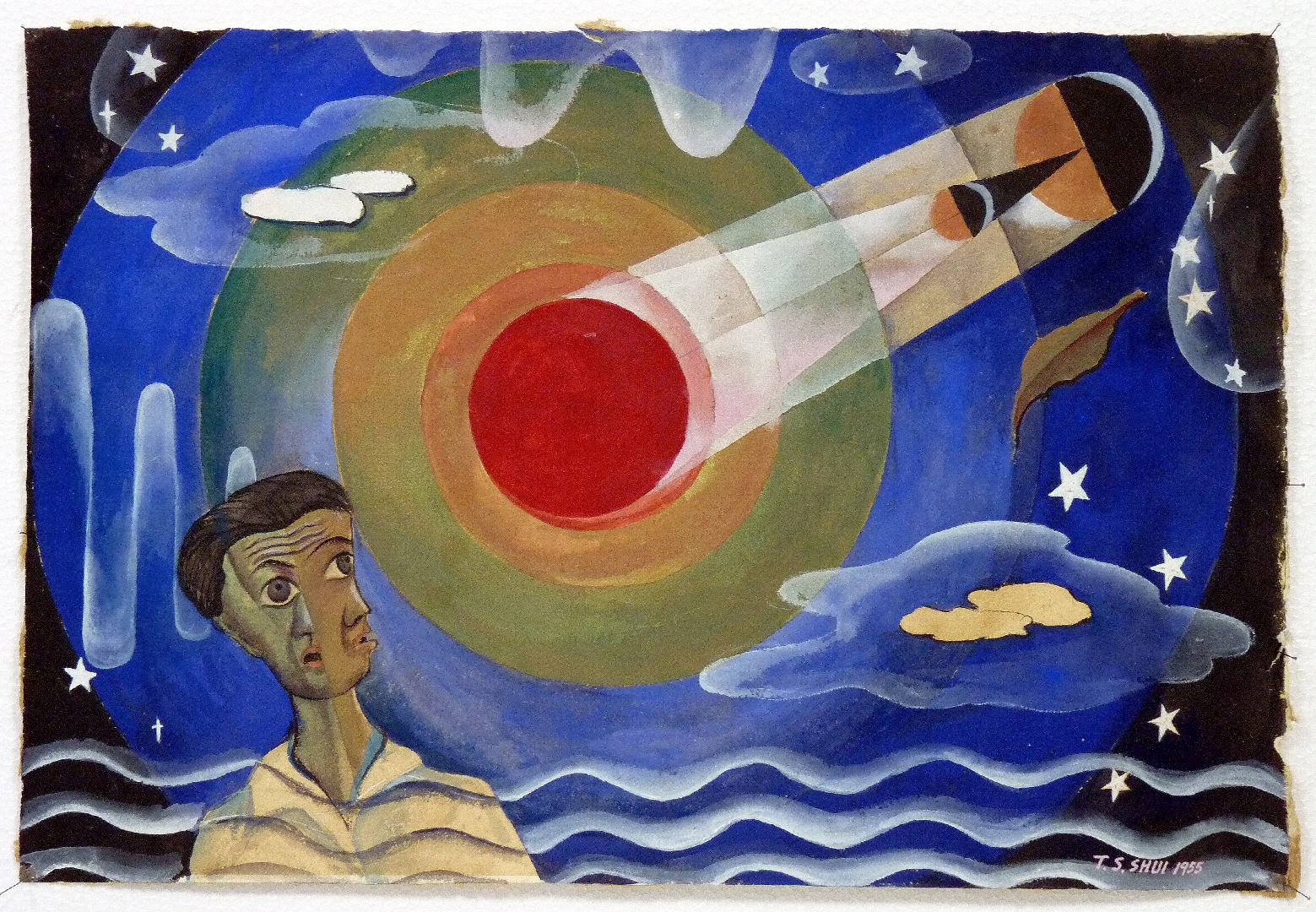
Solar Eclipse, 1955, Watercolour on paper, 38.5 x 56.5 cm
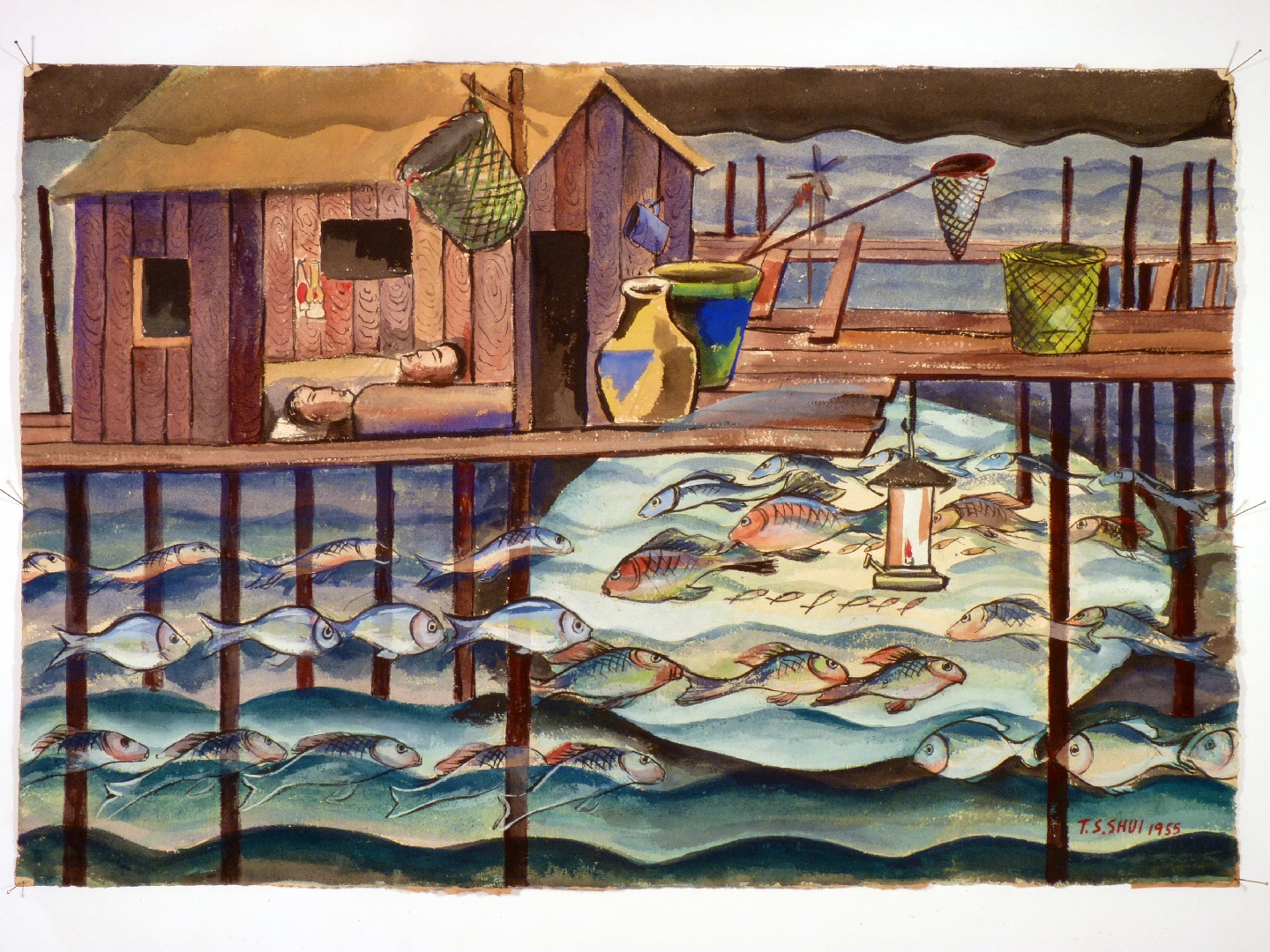
Dream of the Fishermen, 1955, Watercolour on paper, 38.0 x 56.0 cm

